Information and resources about conditions and needs that MSF responds to
in the field and that are linked to disabilities.
Architect and universal design expert Cora Valloire decided to do her master's thesis on universal design in humanitarian settings. In her study, she analyzed two MSF hospitals and how to improve them from the universal design point of view. In this interview, she tells why universal design is relevant in humanitarian settings as well.
Many people think about ramps when asked to explain accessibility. But what is universal design?
"To design universally is to avoid the ramp," architect and universal design expert Cora Valloire explains.
What?
"Yes, universal design is to have a solution that gives the possibility of the having the same access for everybody. So if, for example, at the entrance of a building, we can elevate the level of the paving, we can also avoid the steps and consequently, the ramp."
In short, universal design is for everyone. The textbook explanation of universal design is: "a framework for the design of living and working spaces and products benefiting the widest possible range of people in the widest range of situations without special or separate design."
As we chat, Valloire shares some good examples of universal design: the Schandorff Square in Oslo, Norway, a sea spa, Disabled People's Organization Denmark's office building called "the most accessible building in the world."
However, the examples seem quite far removed from the reality of humanitarian intervention in the crises zones of the world. In the contexts where MSF works, the building materials and funding can often be limited. Can universal design really play a role in humanitarian work?
"Yes, because universal design is not necessarily more expensive, it can be even cheaper," Valloire explains and gives an example. In her thesis, Valloire analyzed two MSF hospitals: one in DRC and one in Yemen via pictures and other material she got.
In one of the wards in the DRC hospital, every front door has a ramp. In theory, this is an excellent thing. However, the ramps are very steep and would be pretty challenging to use for a wheelchair user or anyone who has trouble moving.
"Instead of having four very steep ramps, the ward would probably be more welcoming for all kinds of patients if it had only one excellent ramp. Furthermore, by building one good ramp, it could even save construction materials and money."
It doesn't necessarily cost anything extra to make facilities better for everyone. For example, by painting the doors with dark colors and walls with light colors, we can make navigation inside the hospital easier for persons with visual impairment. But there's an even better reason to consider adapting the universal design in humanitarian work than the price.
"Universal design is the most democratic way of designing, which goes hand in hand with a humanitarian mission: To help all in need regardless of age, gender, or disability."
When she started her thesis, Valloire had no previous experience in humanitarian work, and she was surprised by how much the context influences the construction of a hospital.
"It became evident to me that you can't just build a hospital in one town and copy it to all the other cities. The weather, the culture, everything has an impact."
Due to this fact, Valloire gave different recommendations in her thesis for the Yemen hospital and the DRC hospital. Because the hospital in DRC is in a remote place with bad roads, not many patients living nearby will be using wheelchairs even though they might otherwise need them.
"Of course, ramps are always good – but when the resources are limited, it might be a better use of the funds to build roomy restrooms and roofed pathways in the case of heavy rain."
Valloire wants to challenge MSF a bit on this. The perfect hospital has limited use for the patients if the roads to the hospital are not there.
"Could MSF advocate the local authorities for better accessibility to medical structures?" Valloire asks.
In the Yemen hospital, the context is entirely another compared to the DRC hospital. It is in the middle of a city surrounded by concrete roads. Due to the ongoing conflict, many people have been injured and use assistive technology such as wheelchairs. So the ramps are a must for this hospital.
Surprisingly, Valloire isn't only concentrating on how to make moving inside the hospital as easy as possible. She also pays attention to the potential that the existing small hospital courtyard has.
"In Yemen, the context means war. That's why I concentrated so much on the little garden like a small oasis – that is also universal design. It's all about how to improve everybody's life."
Universal design is based on seven principles, and not all of them have to do with assistive technology. For example, in universal design, designers should also consider body comfort and how intuitive the infrastructure is to use.
"I could see those inner courtyards as healing places. It's also about the little comfort that they can give to the users."
Are you interested in how you could use universal design in your project? You can register for our next webinar on “Accessible construction and universal design in humanitarian settings” here.
The MSF-OCB association coordinator in DRC, Louise Limela, was getting ready in a meeting room in Kinshasa. Representatives from 12 different associations were on their way. After this workshop, they would become peer educators and could tell their peers in their associations about family planning and how to protect themselves from contracting HIV.
It was like any health promotion session. Except it wasn't. The peer educators were from 11 different disabled people's organizations – one was an association working with orphans. It meant that Limela needed to make sure that the information was genuinely available for everyone: Can we print the material in braille so that persons with visual impairment can read it? Was the room where the health promotion session was held accessible for wheelchair users? Where to book the sign language interpreters for participants who are deaf? The planning paid off:
"The persons who joined the health promotion session were pleased that those who needed it had access to an interpreter and the writing in braille."
The participants were also very happy that MSF consulted them and didn't do everything by itself.
"Persons with disabilities are not often consulted. Our goal was to give them a high level of autonomy so that no intervention from the outside would be needed."
The peer educators have started their work in 11 different disabled people's centers. Through their efforts, hundreds of people will learn about family planning and HIV.
But why persons with disabilities as a focus group?
"The association held a focus group meeting, and we found out that persons with disabilities in Kinshasa have little knowledge about family planning and HIV. For example, there are no sign language interpreters in hospitals, so deaf persons can't get information on protecting themselves from contracting HIV. And not many instances are offering support and services for persons with disabilities."
In Kinshasa, persons with disabilities often live in centers for disabled people. They usually live in poverty, which means they are at high risk of being forced into sex work or drug smuggling, which means an increased risk of unwanted pregnancies and HIV.
"Everyone we talked with was interested in having children because children are the future. However, as they often live in poverty, and pregnancy has its medical risks as well, the family planning is the key so that the pregnancy is as safe as possible and that the family has enough resources to take care of the baby."
**
Even though the project focused on health promotion, MSF offered also some basic logistic support. For example, in one of the centers for disabled people, the residents were sleeping on the floor on cardboard boxes. With the help of the logistics and construction team, they now have 27 habitable rooms.
Because persons with disabilities do not always get service in health centers and hospitals, the DPOs are doing their best to adapt. The association for the blind in Kinshasa has a small clinic of its own.
"We're planning to make a small donation for the clinic, an examination table, and other pieces of medical equipment."
The peer educators trained by MSF are also helping persons with disabilities to get access to medical services from hospitals. They are, for example, developing a partnership with a health center where deaf people can go with one of the peer educators knowing sign language and who acts as an interpreter. This way, deaf persons can go for consultation without fear of being discriminated against.
Limela was very moved by how committed the disabled people's organizations were. They can do a lot while asking very little.
"The co-operation with the organizations was excellent. It was very impressive. It was also rewarding to see how MSF associations can make a change. Everyone in the MSF OCB in Kinshasa was very involved. Thanks to the opportunity envelope (FOE) of Brussels, we were able to carry out this project."
Fatma Al Jassim was nine years old when she started volunteering. When she was 12, she held workshops for the teachers in her school and taught them about inclusion of persons with disabilities. And now, she is sharing her best tips on being inclusive in emergency response and humanitarian work in general.
Fatma Al Jassim was on the 9th floor of a hotel when the fire alarm went off. Her heart was pounding, and she was terrified because she had no idea how to get back to the ground floor.
"No one around me knew how to help me either. The importance of inclusion in emergency response dawned on me. That feeling of helplessness, the feeling of complete fear, is why I advocate for inclusive emergency response. From that moment on, I've always trained inclusive emergency response as a part of my work," Al Jassim says.
And there has been a lot of work. She is a UAE youth delegate to the Convention on the Rights of Persons with Disabilities for the United Nations (UN), an accessibility professional, and a Person of Determination (which is the preferred term in the UAE) Empowerment Consultant. By her estimate, she has trained over 10 000 people by now — all this by the age of 25.
"As a person with a disability, I learned to advocate for my rights at an early age. Then I noticed that people around me, who had disabilities, didn't know how to advocate for themselves and I taught them how to defend their rights. It started from there."
Now, Al Jassim is working together with different governments and companies to help them improve their accessibility policies.
As MSF pretty much only works in different kinds of crises, emergencies are a part of our day-to-day work. The TIC Project on Inclusion of People with Disabilities is interviewing Al Jassim to hear her how she thinks we could make our emergency response more inclusive. Her first advice is including people with disabilities in the planning of disaster preparedness. If you start planning when the emergency occurs, you’re too late.
"Listen to people with disabilities and recognize the areas that need to be improved. Open the discussion with your employees that have disabilities on their first day. That way, you know how to make them feel safe."
It's not only the employees with disabilities who are benefitting from the discussion regarding safety. Their colleagues without disabilities will also feel safer if they know how to assist their colleagues or what to do in an emergency.
People with disabilities are often in an incredibly vulnerable position in emergencies. For example, the roads in refugee camps might be difficult, if not impossible, to move on with a wheelchair. However, there are differences between disability groups as well. People with physical disabilities are often better included in emergency response than people with developmental disabilities.
"It is important to remember that information is power. The possibility of accessing data via different technologies relevant to them is empowering for people with disabilities. For example, knowing the little things you can do to protect yourself during the covid pandemic is empowering."
When doing community outreach, you should always be thinking about what shape the information comes in. Are we spreading the information only in writing? Or only on the radio? Are there communications material available in easy-to-read language?
The TIC Project on the Inclusion of Persons with Disabilities has created guidelines for ensuring that the lifesaving information on covid infections reaches the patients with disabilities.
Data is also essential for humanitarian actors. Humanitarian NGOs have an amplified responsibility for people with disabilities because they work in crisis settings where an ongoing conflict injures and disables many people.
"In an emergency, it is vital to know how many people need your help. And if you know how many of the people in distress have disabilities, you can plan the emergency response accordingly."
There's one key topic that Al Jassim returns to again and again: Inclusion is an ongoing process.
"The key to inclusion is recognizing that you don't know everything – and that you never will. If you recognize that, you're ready to go on a journey. Ready to make mistakes and learn from them," Al Jassim highlights.
One needs to have an open mind and be curious. And to be ready to accept feedback from people with disabilities and make changes.
"Inclusion is not just about disability. It is about opening our arms for everyone. For me, inclusion doesn't necessarily mean acceptance. But inclusion can be a stepping stone towards acceptance."
So, what is the secret of doing all this by the age of 25?
"The reason I do this is to make a difference. I want to make sure that the next generation of people with disabilities don't have to face the same obstacles we did."
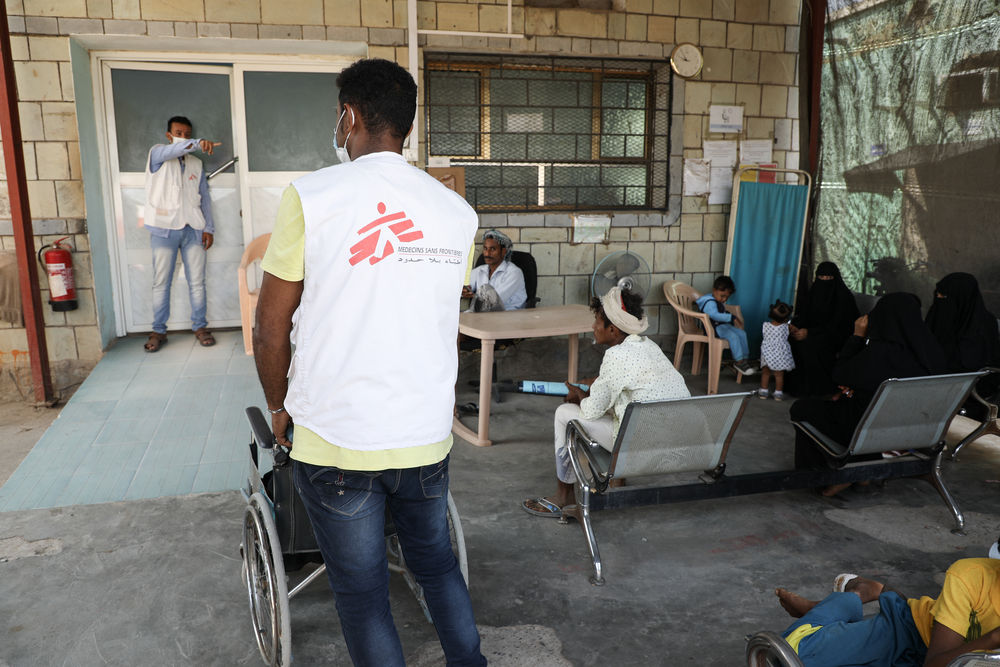
When asked, what prompted him to create the guidelines, the answer comes quickly:
“MSF is a medical humanitarian organization. One of our core principles is to assist populations in distress regardless of their religion, political belief, or country of origin. It is a natural next step to make sure that everyone can access our care. As an architect, I can help make a change.”
Before starting as a Construction and Shelter Advisor in 2009, Cabrera had already been aid worker since 2004. He had worked with MSF in DRC, Ethiopia, Haiti, Liberia, and Pakistan in construction and logistics.
His prior experiences from those projects helped to make sure that the guidelines are practical.
“Most of the time, we do not have architects present in our projects. The guidelines had to be basic, so anyone working in the construction could follow them. At the same time, the guidelines are serving another purpose as well – they help raise awareness about accessibility and people with disabilities.”
The process started by mapping what kind of accessibility documents already were in use in MSF and comparing them with the documents used by ICRC and Architects Without Borders.
Because much of the guidelines had to do with building accessible restrooms and showers, Cabrera worked closely with Water and Sanitation advisors who could provide expertise in this field.
The covid pandemic gave a last boost to the project as one of the canvassers who was a trained architect, and couldn’t work due to the lockdown, could help finish the manual.
In the last phase of the process, Cabrera consulted his colleagues in the other operational centers. After their feedback, the manual was ready to be handed out in the briefings to the people working in construction.
MSF often works under challenging circumstances, which might mean some extra difficulties in building facilities.
Sometimes the biggest barriers for accessible construction are attitudinal. If people with disabilities are invisible in society, it might be difficult to argue why we need to build ramps for people who seem to be non-existent.
“It becomes a vicious cycle. When facilities are not accessible, the patients with disabilities are not showing up. And when they don’t show up, it gives the impression that there aren't any people with disabilities and no changes that would make the facilities more accessible are made.”
Sometimes the physical and attitudinal barriers exist at the same time. That was the case in a project in CAR that Cabrera was visiting.
“The project was in a very remote area, and there was a lack of building materials and we had to improvise with what was available to build a ramp to our clinic. Originally the ramp was built for stretchers, but immediately after it was ready, people with wheelchairs, children, and pregnant women started using it as well. It was a rewarding experience for the staff.”
People with disabilities became visible.
In the future, Cabrera hopes to see that all our health care facilities are checked regularly together with the patients. The patients help with recognizing potential barriers to care and help to find solutions to work around them. Another goal is that all healthcare facilities would have a certain ratio with accessible toilets and showers.
The Project on Inclusion of People with Disabilities recommends contacting and collaborating with Disabled People’s Organizations. They can give great insights to how MSF supported facilities and services can be made more accessible for persons with disabilities.
This year Cabrera is also collecting data on how many projects are making sure that patients with disabilities have access to our health care facilities by implementing the standard measures for accessibility.
“I’m super happy that we’re finally giving more importance to this topic. When we were making these guidelines, we realized that we were already late. We could have done this a long time ago.”
Do you know someone working in construction in humanitarian settings? Please find the accessibility guidelines in ENGLISH, FRENCH, SPANISH, and ARABIC.
Are you interested to know more about universal design? We’re hosting a webinar about accessible construction in humanitarian settings, more information to follow. If you order our newsletter, you’ll be the first to know when the registration opens.
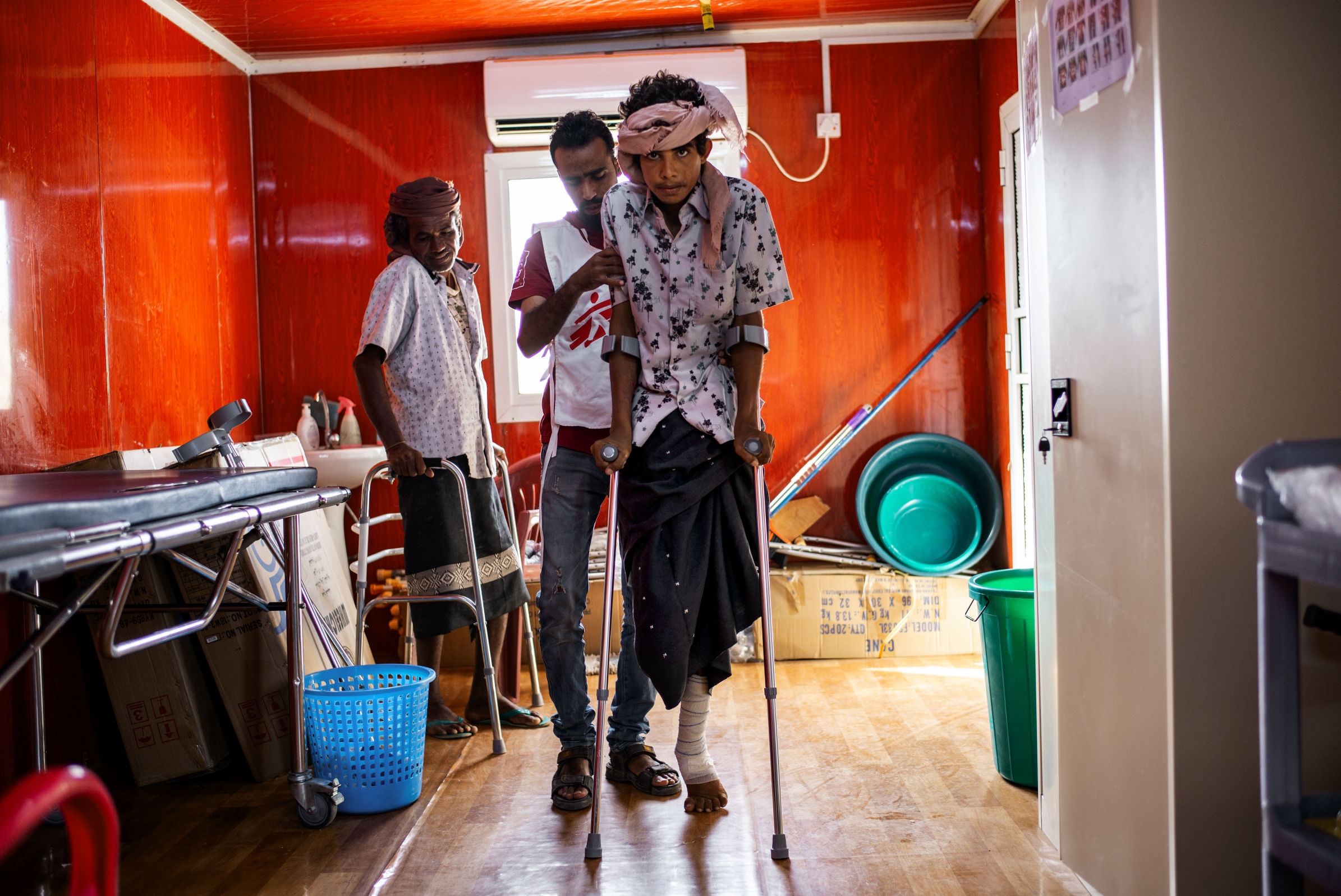
What is the place of physiotherapy in medical action of MSF?
Physiotherapy is part of a multidisciplinary model of care, which applies notably to intensive care, where each patient is treated by a team of specialists. These teams include physiotherapists whose role is, among others, to minimize the sequels. In the contexts where MSF works, this approach is present especially where medical action focuses on war wounded. But physiotherapy can also strengthen for example projects focused on malnutrition and malaria in children or interventions that move away from a purely medical response towards reintegration, such as support for victims of sexual violence. What all these interventions have in common is the reflection on how to maximize the positive impact on the lives of our patients.
What are the links between malnutrition and neuro-developmental delays in children?
Early childhood is a crucial phase of growth, during which development occurs in a number of areas through a series of milestones and acquisition of complex abilities: sensory, motor, cognitive, social. These different elements are developing simultaneously [1]. A child under one year of age will not express himself or herself verbally, but will communicate through movement. This is how they will develop their intellectual capacity and curiosity, including the curiosity of others, and hence also sociability. These links between different skills form a necessary basis for child’s development in the future. Malnutrition is among the risks that can limit this potential for growth. A severely malnourished child is in survival mode, their body focused only on those physiological aspects that allow it to survive. During this time of crisis, the child’s motor and cognitive development is interrupted. Since there is a window within which developmental milestones must be reached, if the child misses it, he or she lags behind in acquiring the essential stages of development. This exposes him or her to a significant risk of a motor or cognitive impairment [2].
What are the opportunities to maximize the developmental potential of children at risk through physiotherapy?
If physiotherapists can help optimize the child’s potential, it is because we know the different stages of motor development, and in particular what is called the integration of primitive reflexes. At the start of life, a child experiences only involuntary movements. As brain connections develop, what used to be a reflex becomes a voluntary movement, something acquired. It’s quite a process. In order for it to be accomplished, the child must be stimulated. But a child who is in survival mode is not attentive to stimuli in its environments. This limits the capacity to learn new motor skills, which is an integral part of social and intellectual development. Integration of therapeutic methods based on the identification and evaluation of developmental delays, as well as on play, allows for an appropriate treatment, reduces motor deficit and motivates the child and the parent. This way, we limit after-effects of malnutrition and optimise the child’s potential for neuromotor development.
And what if we do not intervene? What is the cost of missed opportunities?
Lack of treatment of developmental delays in children under five affected by malnutrition translates into an increased risk of a handicap and of other chronic complications [3] – because if the child does cannot move towards the other, they will not be able to develop intellectual and social capacities. In many contexts where MSF works, this can lead to stigma, exclusion, and increased vulnerability.
What are the lessons learned from the pilot initiative that you participated in, and that aimed to integrate the physiotherapeutic component into the care of children suffering from malnutrition in one of the MSF projects in Cameroon?
The Mora project, in Cameroon’s Far North region, provides medical support, including nutritional care, mental health services and emergency surgery in the event of mass casualties. The key lesson from the pilot project that MSF implemented there in 2019 is the confirmation that treatment of severe malnutrition does give better results if combined with physiotherapy and a psychosocial component. The pilot project included training of staff as well as integration of procedures facilitating diagnosis of neurodevelopmental delays and appropriate monitoring of children with a suspected delay. The proposed model makes it possible to start physiotherapy even in the most severely malnourished children, and early on in the initial phase of treatment. As the child's condition improves, interaction is added, with daily sessions that stimulate the child through play. The proposed approach is relatively easy to implement. Being in itself a medical act, physiotherapy strengthens the patient’s response to treatment. Screening for delays in children makes it possible to adapt care, and truly focus on the patient. Identifying symptoms of delay early helps prevent disability. Therapy sessions also motivate parents, especially mothers, to be more engaged, which has long-term benefits for the child, beyond medical care.
Is there a patient story that has particularly touched you and that you would like to share with us?
Among the children hospitalised in Mora was a five-year-old girl with cerebral malaria. After a period of coma, she stopped walking. Just hours before leaving the hospital, she was still not able to move independently. The mother's expectations towards the child were very high: she wanted her daughter to walk, but showed no support. The MSF team knew that without the ability to walk, the girl would find herself in a situation possibly leading to a lifelong disability: she would be taken home and most probably left without the assistance and stimulation needed for her to recover. A single 45-minute therapy session allowed to mobilise the girl, who walked out of the hospital on her own. This story is a beautiful illustration of the impact that simple physiotherapeutic care can have on the health and the future of a child.
During the COVID-19 pandemic, we have all explored new and different opportunities of working remotely. Could telemedicine and remote monitoring be considered in the implementation of physiotherapy in the field?
It is indeed possible to advance physiotherapy in our projects by using telemedicine and remote patient monitoring. This is already done by MSF in treatment of patients with orthopaedic complications. It is also possible to train staff in the field during short missions, and then offer opportunities for follow-up, orientation and coaching. In the case of the young patient unable to walk after being in a coma, the person doing the assessment was guided from a distance by a physiotherapist present in the same room. One can well imagine a situation where this is happening remotely. Such tools will certainly facilitate integration of physiotherapy services into our operations, if they are used by experienced physiotherapists with technical knowledge needed to improve the patient’s condition, and perhaps also their life.
[1] Sally Grantham-McGregor, Yin Bun Cheung, Santiago Cueto, et al. (2011), Developmental potential in the first 5years for children in developing countries, Lancet 369: 60-70.
[2] For futher information, see the following publications:
Susan P Walker,Theodore D Wachs, Julie Meeks Gardner, Betsy Lozoff , Gail A Wasserman, Ernesto Pollitt, Julie A Carter, and the International Child Development Steering Group (2007), Child development in developing countries 2 - Child development: risk factors for adverse outcomes in developing countries, Lancet 2007; 369: 145–57.
Melissa Gladstone, Mac Mallewa, Alhaji AlusineJalloh, Wieger Voskuijl, Douglas Postels, Nora Groce, Marko Kerac, and Elizabeth Molyneux (2014), Assessment of Neurodisability and Malnutrition in Children in Africa, Seminars in Pediatric Neurology 21: 50-57.
Handicap International, 2017, Breaking the cycle of malnutrition with physical therapy, 26 April 2017.
[3] Ernesto Pollitt (2000), Developmental sequel from early nutritional deficiency: Conclusive and probability judgements, The Journal of Nutrition 130: 350-353 .
D.S. Fernandez-Twinn and S.E. Ozanne (2006), Mechanisms by which poor early growth programs type-2 diabetes, obesity and the metabolic syndrome, Physiology &Behavior, Volume 88, Issue 3, 30 June 2006, pp. 234-243.
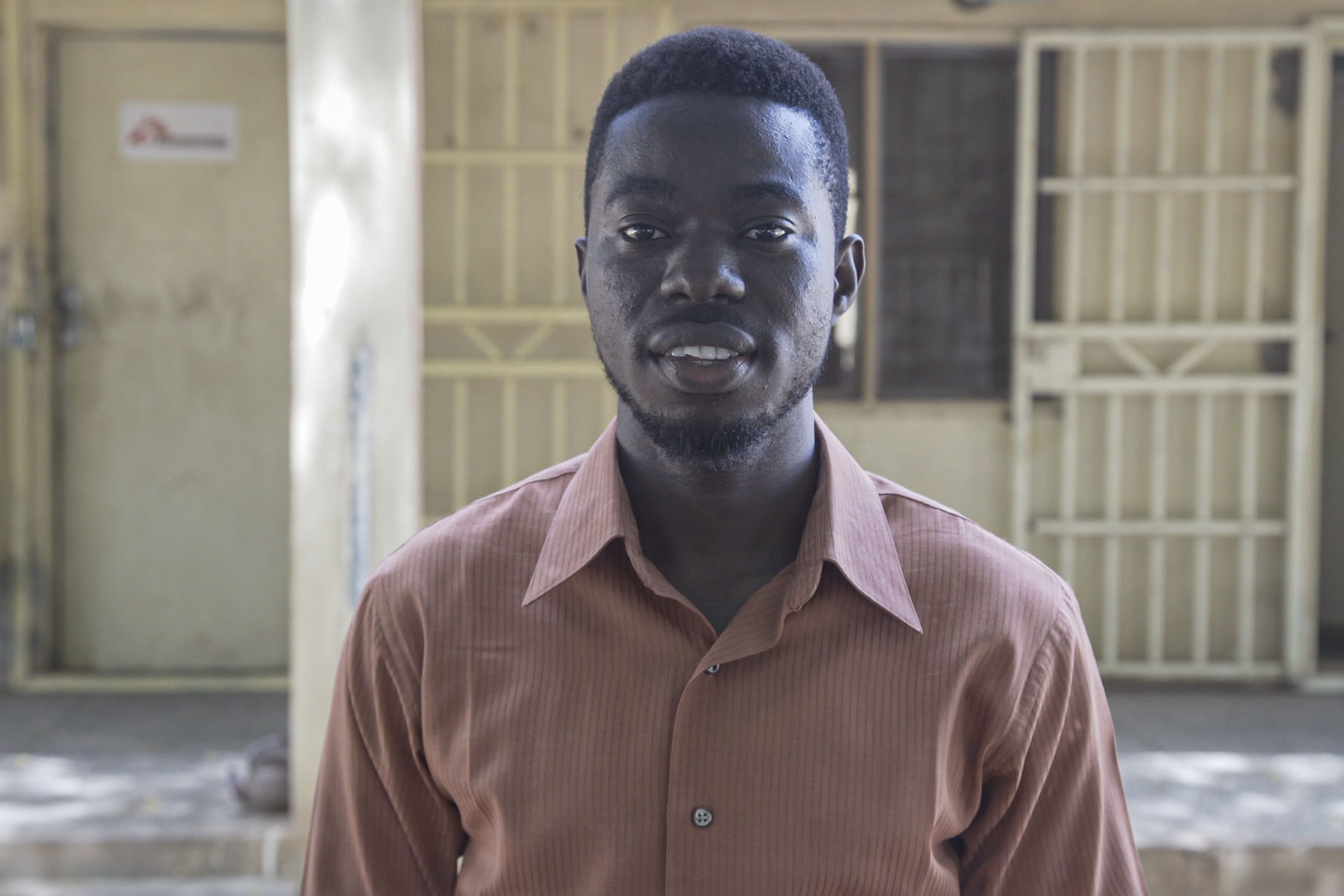
What is your role in the Sokoto noma hospital? What are the main physiotherapy activities in this project?
As a physiotherapist, I help improve, increase and maintain mobility of the body parts most affected by noma: the jaw, the mouth and the soft tissues around them. It is a highly specialised treatment. In Sokoto, we offer different types of physiotherapy depending on the stage of the disease. For those who come to the hospital early, the most important thing is to prevent trismus, or a painful restriction in opening the mouth. Some other survivors already experience trismus and other devastating consequences of noma: tissue loss, scarring, disfigurement, undergo a series of surgeries. Post-operative physiotherapy is included in the package of care for these patients. We also provide physiotherapy for children who have missed developmental milestones due to malnutrition, which is at once a risk factor for noma and its common consequence. Whatever the stage of noma, an integral part of physiotherapy is training of patients and caregivers on how to continue treatment after discharge from the hospital, at home.
How is your role placed within the project’s medical team?
The team is multidisciplinary, with doctors, nurses, nutritionists and mental health counsellors. Part of my role is to support our holistic approach to treatment. When new patients are admitted to the hospital, they are referred to me for assessment. This allows us to identify patients with trismus or developmental delays and to establish an individual treatment plan. With nutritionists, we work together on treating malnutrition and attaining the missed developmental milestones. Our efforts are interwoven: while the nutritionist helps the patient eat better and gain muscle mass, I focus on increasing the mouth opening and improving the muscle strength. I also collaborate with the mental health department. When patients or caregivers are psychologically affected by noma, when they struggle to understand why they need physiotherapy or refuse treatment, the mental health team talks with them and helps me understand their fears. Together we reassure them and inform them.
When you first receive patients, what major challenges do they face?
The biggest challenge treating noma is lack of knowledge of the disease and of how it progresses. It only takes a few days from the onset of noma to the appearance of physical changes. Unlike malaria, endemic in the region and well-known in the communities, noma is still little-understood. When it strikes, most parents do not know what is happening to their child. First, they notice bleeding of the gums and try to wash the mouth, then there is swelling of the face, a hole in the cheek – and before they know it, the soft tissue is gone. It happens so fast and is difficult to accept. To complicate things more, some long-term consequences of noma, including trismus, appear gradually, and slowly enough to go unnoticed. Some patients come to the hospital with their jaws already locked. Their caregivers feel confused and helpless. That is why the first thing we do here in Sokoto is to help them understand the disease and the treatment, through health promotion and counselling.
How do you accompany your patients and build relationships with them?
Building relationships with patients is vital for this work. During therapy sessions, I have to touch patients, come close to them, make them understand that I know what they are feeling, and help them grasp what is happening. I usually work with children under five. Older children have a better understanding of the situation. But the youngest ones cry and become apprehensive. When they see me put on gloves, what comes to their mind is wound dressing, and they get scared. I have toys in my office, so we often have a play therapy session first, to allow children to get to know me. There are also pictures to attract their attention, different smiling faces, and I use them to show that I am not an enemy, but a friend. I also visit children at the ward, to spend time with them. This is how I gain their trust. Once I have it, it is much easier for me to carry out treatment. After a while, children who used to be shy and afraid sneak into my office to play. Some begin to call me “baba”, which in the local language means “father”.
When building a relationship with a child, I also need to build a relationship with a caregiver, because after the child gets discharged, it is the caregiver who must take responsibility for daily exercises. This involves a lot of training, and sometimes also creating conditions for caregivers to bond with children through play therapy sessions. If the child trusts the caregiver, if their bond is strong, there is a much better chance that the treatment will continue at home.
And how do you work and connect with the community?
Community outreach is the cornerstone of the Sokoto project and it is done by a dedicated team. I work with health promoters to explain how trismus sets in, so that they can carry these messages to the community. They also help me contact families of patients who have missed their follow-up appointments. When I learn that a caregiver fails to continue therapy, together with the mental health team I call whoever is at home – sometimes the father, sometimes the community head – to explain again the treatment and to ask for more support to the patient.
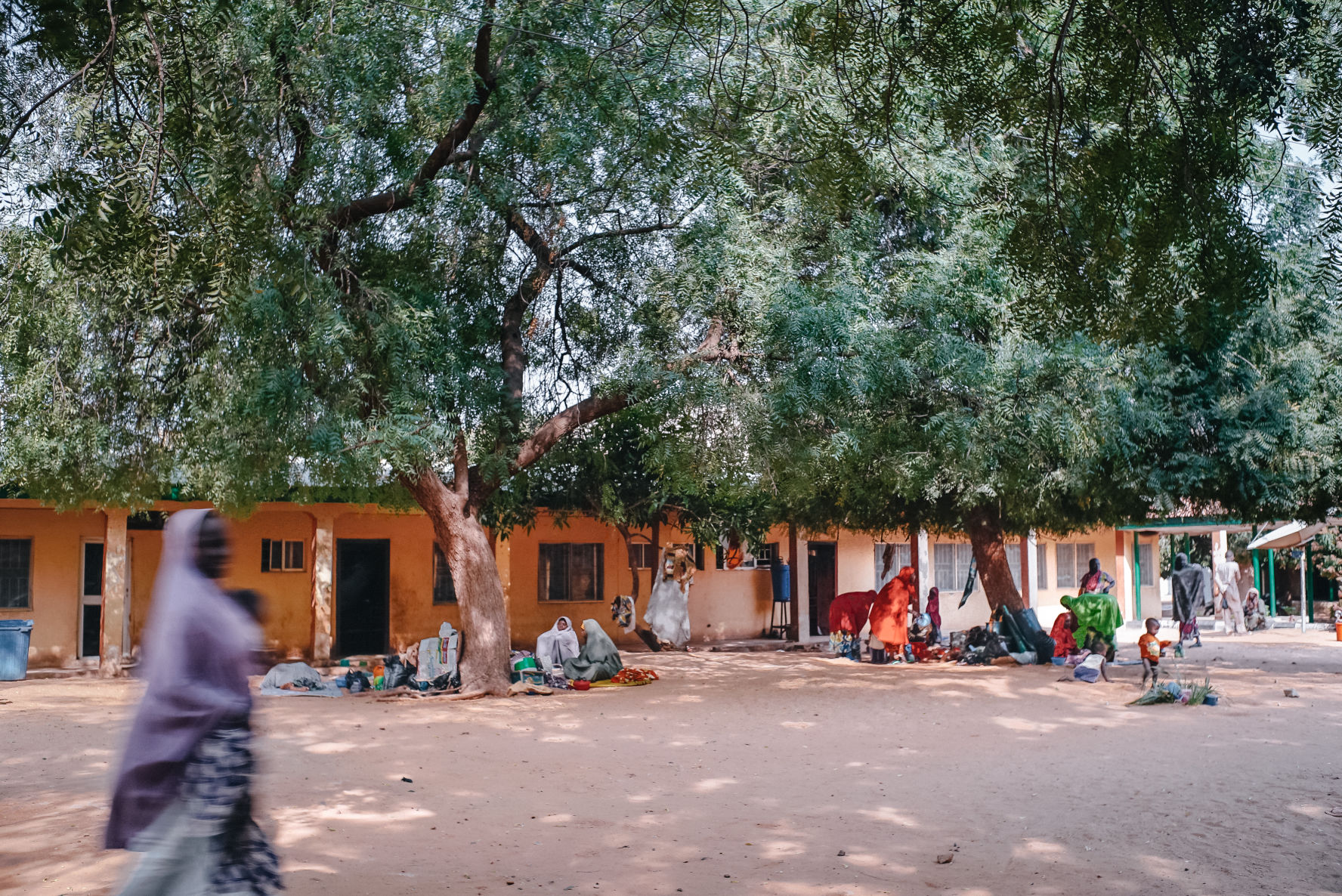
What do you find the most challenging in your job?
Is there any patient story that has stayed with you and that you would like to share?
I hear stories of patients who have not opened their mouth for years, who can barely speak and who struggle to eat, pushing tiny bites of food between their teeth. Throughout their ordeal, they stay incredibly strong. When you first meet them, they seem withdrawn. But as their treatment progresses, they begin to talk, interact and laugh, and when they are finally discharged, they have the confidence to do whatever others do.
I remember a boy who lived with his grandmother and came to the hospital with the mouth opening of just one millimetre. Within a few weeks, we increased it to six millimetres. When the boy came back for a follow-up, he ran to me and exclaimed: “My mouth is open! My mouth is open!” The grandmother said that he could eat and play with other children, and that he went back to school. Survivors of noma very often drop out, because of their disability and the stigma around it, so it was amazing to know that this boy got a second chance of education.
Another patient of mine was a young woman who could not get married because her jaw was locked. She underwent a surgery for trismus release and with physiotherapy we managed to open her mouth. When she came back to Sokoto, she brought an invitation: she was inviting me to her wedding! I still have this invitation, it is pinned to my office wall, and every time I look at it, it encourages me and reminds me of the impact of my work.

What are key populations, and what is the source of their vulnerability in contexts where MSF works?
Key populations are the groups we used to call high-risk or vulnerable populations to sexually transmitted infections (STIs) and HIV. The term was coined by the World Health Organization to describe population groups with higher risk of HIV infection. Today, 62% of all new HIV infections happen within the key populations or their immediate partners and communities [1]. It represents a huge vulnerability and a big bag of complex structural issues. What all key populations have in common is that in addition to being stigmatised, they are criminalised in many or most countries. They are sex workers, men who have sex with men (MSM), people who use drugs, and prisoners, who are criminalised de facto. Across these groups, there is also the transgender population, particularly transgender women. Initially, the term “key populations” stirred controversy, it was worried that it would add to the stigma. This has not happened: the term has broadly been welcomed and appropriated by key population groups, and has stayed as a focus for advocacy on public health investment in the fight against HIV.
Apart from criminalisation, what are other shared characteristics of key populations?
It is being shunned by the society because of ‘otherness’, which fuels stigma and discrimination. This is compounded by other factors such as poverty, exposure to violence, gender, disability and mobility. With HIV/AIDS, falling into the high-risk category is a downward spiral often linked to poverty, which remains the salient feature of most members of key populations. Being part of key populations exposes people to health risks because of their economic and social status. There is also a lot of violence around these groups. One of the most complicated undertones of trying to address it is gender normativity. It is transgression of gender norms and roles manifested in the livelihoods of key populations that is among the main triggers of violence towards these groups, especially towards sex workers and those MSM who are seen as “feminine”. The perpetrators tend to be typically male authoritarian figures, often the police. That is why one of the critical enablers to address the needs of key populations is their society’s understanding and acceptance of the fluidity of gender and sexuality in humans. The group of key populations is dynamic: people belong to it at some point in their life, rarely forever. It is also mobile. Due to criminalisation, by the state or by own family, members of key populations tend to move away, often to places where they do not know how the social structure works. If they are lucky enough to meet peers, they find a way to survive, as exclusion tends to be mitigated through meeting others who are alike. Sometimes these groups develop an impressive activism and empowerment which can help address factors leading to exclusion and even inspire or reach out to support other marginalised groups. Migration and homelessness are also characteristic for these populations, although they do not come to the forefront when we think of HIV, due to the strong focus on medication and access to treatment. Key populations can be mobile and scattered, and hard to track.
How does MSF ensure access to these groups?
Trust is essential. It’s hard to approach these communities unless you are connected with representatives of key populations. If you meet one or two people who belong to a network and trust you enough to make an introduction, you can get access to these populations. I remember that we were very lucky with initial access to key populations in our HIV project in Tete, in Mozambique [2]. A group of Zimbabwean sex workers, who knew MSF because they had spotted our white cars driving around to deliver antiretroviral therapy (ART), came knocking on our door and said: “We see MSF around, but we can’t access treatment in Tete, because we are not from Mozambique”. We followed their lead, met them in communities, started mapping their networks, and soon realised that the problem was broader: the lack of access to care had affected not only sex workers from Zimbabwe, but also several other groups hidden in different hotspots. Local sex workers proved to be even more difficult to approach, but with time we managed to sensitise ourselves and recognise the diversity and the blurry boundaries of these groups. As soon as you meet an honest true peer, the chance arises to reach the communities and start unlocking access to care.
Once access is established, what is the role of peers and peer networks in delivering assistance?
How does MSF collaborate with other organisations on community engagement? What are the benefits of such collaborations?
In some projects, we have invited people from other countries to give us trainings on outreach approaches such as micro-planning, which decentralises decision making to peer providers and ensures that the community remains engaged by its own motivation rather than through instructions and incentives provided by aid workers. Those mechanisms are best taught by sex workers, MSM or drug users who have already trained others like themselves. The social construct of how to deal with it has to come from an experienced other, and since we do not have enough of experienced others yet, we ask both local and international key populations community-based organisations from Zimbabwe or from South Africa to come and train MSF teams in different countries.
It is also crucial to link projects to local stakeholders working with key populations. However, if you think about Mozambique, Malawi, Kenya or Egypt, or other places where we work, and consider their legal environments, these other organisations can be underfunded and unsupported. Sometimes their capacity is simply not good enough for our projects to rely on. That is where we may have to encourage further-resourced international organisations to step in. We are currently looking at possibilities for further capacity building of budding community-led organisations. One example could be SWED in Malawi, a group of female sex workers who are taking great strides in building their organisation. I have just heard they have even rented an office space! There are already five small key populations-led organisations which have been built with the support of our interventions.
In projects focused on key populations, does MSF encounter and treat persons with disabilities?
Once we know the peer networks and the communities, we start noticing the diversity within them. Every now and then, we see among them a person with a disability, often someone who because of their impairment has experienced exclusion, dropped out of school and learned to survive through sex work. These people belong to groups that cling together to look after each other and that understand the extra vulnerabilities of those who might be further abused. Abuse of sex workers happens daily, and there is a correlation between having a disability and being more exposed to abuse and violence. Persons with disabilities are likely to get the roughest treatment.
I remember one sex worker from our project in Malawi. She has a kyphosis, her back is abnormally curved, her walk contorted. She belongs to a group of six. They all laugh and dance together, and she gets support from her sex-work sisters. While we should not romanticise the ‘sisterhood’, there is a certain degree of solidarity among sex workers, as well as among MSM, prisoners and people who use drugs. Within the networks of the vulnerable, criminalised, marginalised, people tend to have this self-identifying way of pulling themselves together; and when they recognise themselves as part of a group, there is a warmth of support. There seems to be no further exclusion within the excluded: I have never seen people with disabilities being rejected from these networks – except those with severe mental impairments that make it impossible to interact with others. In one of the projects, there was a deaf sex worker who had found space within a group for herself and her baby, even though nobody around her knew sign language. The situation is the hardest where sisterhood and solidarity do not exist, or when they are not present yet. The people who fall through the cracks, who tend to be excluded and unsupported, are the new ones into whatever population you are looking at.
There seem to be many parallels between the challenges surrounding key populations and persons with disabilities in settings where we work. While MSF has worked with those at high risk of HIV infection for years, inclusion of persons with disabilities is still a relatively new topic for us. Drawing on experiences from HIV projects, what can we do to enhance inclusion of other vulnerable groups, including those with disabilities, in our operations?
An important lesson is that we need a mix of health facility based integrated services and tailored parallel services. We can develop a parallel outreach system, for example mobile clinics, to gain trust of the communities of persons with disabilities. Trust often comes with representation of the community included in decisions for programming, and with capacity building that allows peers to run parts of the project. Here, I absolutely see a parallel with key populations and a possibility to apply similar tools, such as one-stop clinics or drop-in centres, that engage with populations in a way that is not purely medical. With groups that are criminalised, stigmatised and denied participation, which in many contexts is the case both for key populations and persons with disabilities, there’s a need for the social cohesion part of the assistance. Mental health and substance use including alcoholism could also be perceived as a form of disability that stigmatises and denies access, and this often intersects with key populations as well. There is a need for the creative space, as we call it, a space where our patients can be who they are, and be accepted as they are, where they have access to services and information adapted to their needs, where they can build confidence and access their rights. This also creates space for advocacy, for speaking out about the gaps in assistance to communities. For persons with disabilities, it might be training in sign language, ramps in health centres or a more inclusive curriculum in schools. Having this model instilled in criminalised or excluded populations often brings a sense of social cohesion and empowerment. What can further support this process is working in partnerships with other health stakeholders, holding them accountable to make information available for persons with disabilities, making appropriate health promotion materials using for example braille or other adaptations and technologies, and ensuring that persons with disabilities and other vulnerable groups are not left behind.
What’s the impact of empowerment of peers?
What has been happening recently, thanks to the collaboration with external organisations training MSF peers on how to talk about rights and violence, is that people within these projects have created their own tiny community-led organisations. Through acquiring this kind of identity, they can participate in communities and become inclusive organisations moving the human rights issues forward. The main challenge for such community-led organisations is fundraising and capacity building, and in some contexts MSF might look into supporting such efforts. Empowerment of peers is also something that helps us as MSF adapt and improve our response. Our first ever sex worker peer educator in the project in Tete, Marta, came to me one day and said: “We’re happy that MSF gives us our refill of antiretroviral drugs, but what I’m most worried about is my womb, because this is what we die of”. She was talking of cervical cancer and unsafe abortions. For me, it was a revelation: I suddenly saw that for our patients, it was all very much about the physicality of what was going on in their lives. Because of how medicine sometimes operates in silos – you work with HIV or tuberculosis, or hepatitis C – it might be difficult to see the person in a comprehensive manner. Peers make you realise that. That conversation was an important moment to make us as MSF think integration of HIV and sexual and reproductive health services. Today, we are talking about integration and person-centred care everywhere; but Marta was already asking for this in 2013. It brought to the forefront the need to provide comprehensive services, to see the person as a whole. MSF handed the project in Tete to MoH in 2018, and Marta remains a peer educator and a leader of her community. These days, she keeps sharing messages through a WhatsApp group on how her community is dealing with the COVID-19 crisis.
[1] UNAIDS Data 2020, p. 4.
[2] MSF handed over the project to the Ministry of Health in 2018. For 16 years, the teams in Tete had been working on innovative approaches to scale up HIV care, including community antiretroviral treatment groups and a community initiative to monitor and address supply issues around HIV and TB drugs.
[3] A slogan coined and a principle advanced by the disability rights movement, “Nothing about us without us” is also used widely for sex workers and other key populations. See for example: Good Practice Guide to Integrated Sex Worker Programming by the Sex Worker Education and Advocacy Taskforce (SWEAT).
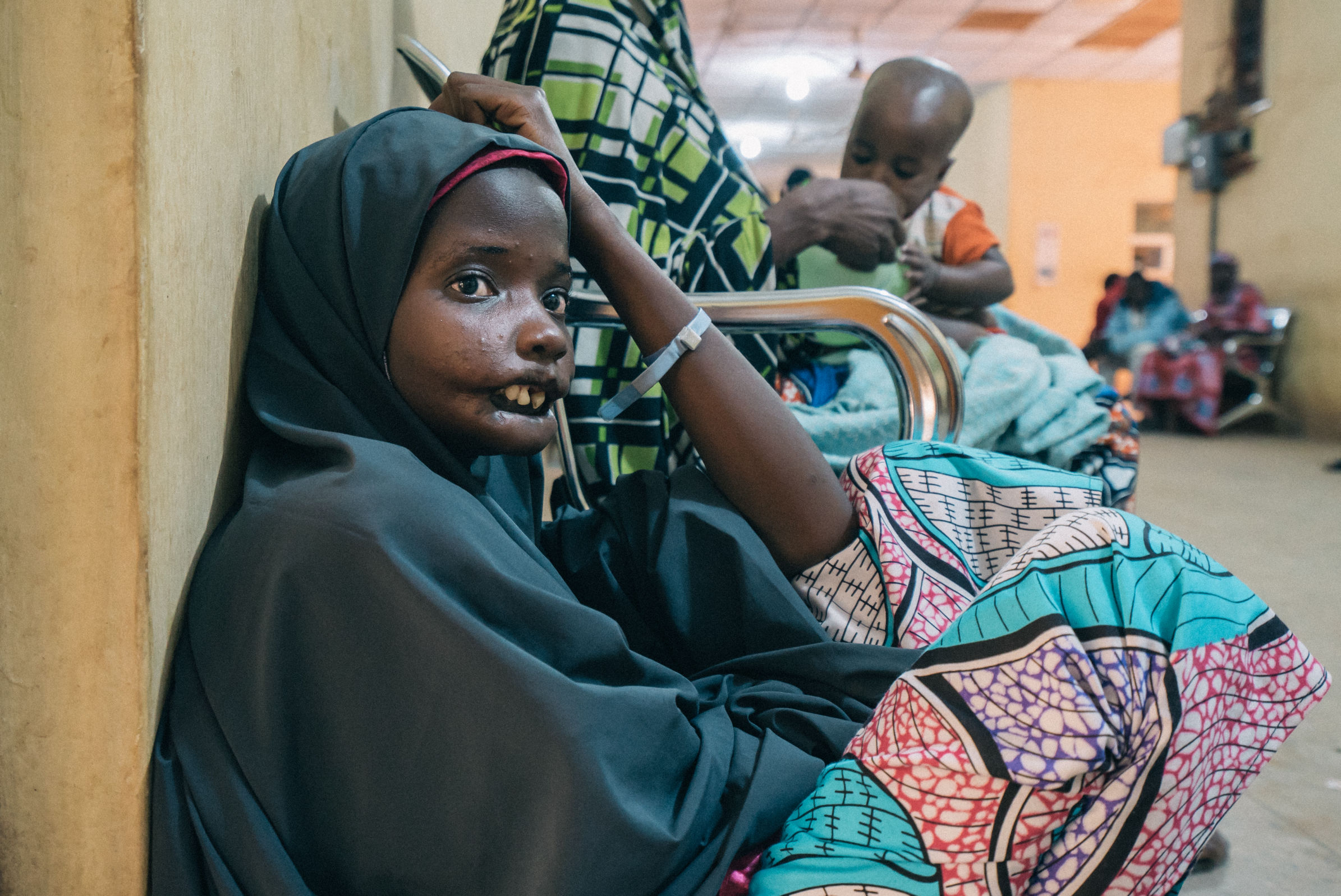
Active case finding is also part of the strategy in Sokoto. Does it focus on children with early symptoms, or on survivors that could qualify for reconstructive surgery?
It is definitely easier to find survivors. Because of the visible disfigurement, they can be identified by families and community leaders. Finding early cases is much more complicated, as they only have a swelling of the gums, which become inflamed, enlarged, redder than usual. To capture children with these symptoms, you need to go into the community, do the screening and bring those with an inflammation to the health centre for treatment. While screening allows for finding cases at a specific point in time, what is most needed, is for case finding to be done continuously. MSF works with local health workers to make sure that they know how to identify the symptoms and that in all clinics we collaborate with children are routinely screened for noma.
Are there any groups exposed to or affected by noma who are particularly hard to reach?
In northwest Nigeria, there are pastoralist communities, hard to reach because they are on the move, and at risk of noma due to their exposure to malnutrition and difficult access to clean water. As the security situation in the area worsens, we experience more challenges in accessing communities affected by violence. We see a combination of fragilities within these communities, but conflict restricts our capacity to operate, and we fear it may further diminish. That’s why we need new solutions that will allow us to engage with these communities remotely.
What are the most important elements of a holistic approach to a noma intervention?
The surgical component is for one out of ten that survives the disease – so we need to look at nine out of ten that die. Access to healthcare is vitally important. Parents would bring their children with inflamed gums to the clinic – because when the gums are that painful, the child stops eating. When access is secured, we can do antibiotics treatment, and the child can survive. Another aspect is vaccination. Noma is linked to lack of vaccination against measles, and data from the Sokoto hospital show that only 14% of children have had a measles vaccine. It gives an insight into how difficult it is to bring vaccines to the community. The burden of preventable diseases in the region is huge. Measles, malaria, HIV, or any infection can lower the immune system, and people who are immunocompromised are more prone to noma. So are those who use dirty water for day-to-day survival, as one needs good oral health – so a clean mouth – to prevent the infection. Hence, water and sanitation are essential. Since malnutrition is among the key risk factors, what is also much-needed is to increase food security and resilience of the communities.
As a medical humanitarian organisation, what can MSF do to address any of these broader issues?
We do WASH activities in some communities. We also do screening, as part of surveillance and to identify malnutrition crises. We cannot respond to complex structural issues, but we can speak out and advocate to mobilise other actors to intervene.
MSF is also advocating for noma to be included in WHO’s list of neglected tropical diseases (NTDs). Where are we in this journey?
So far, noma has been too neglected to be recognised as a neglected disease [2]. There’s a wide group of advocates, especially through NoNoma federation, that join efforts to get noma onto the list. MSF continues to network and develop collaborations with these organisations. We advocate towards WHO, through the noma documentary made in collaboration with MSF, but also through academic conferences – because more research and more funding are among the most pressing needs. We want to help gather different perspectives on noma, so that WHO and other key actors can see the big picture and respond in a concerted, holistic manner.
What lessons learned in Sokoto could help strengthen disability prevention and inclusion in other MSF projects?
What we have learned in this project is that there are two pillars of prevention and inclusion. One is community engagement: working closely with communities, listening to them and raising awareness to counter stigma. The other is adaptation: making our services disability-friendly. In Sokoto, we have done both. We have tailored the hospital to the needs of patients with impairments, but also continued to reach out to the community to educate, break down barriers and advocate for survivors. The need for strengthening this model, at once community- and patient-centred, is also one of the biggest lessons from COVID-19.
[1] Farley, E; Bala, HM; Lenglet, A; Mehta, U; Abubakar, N; Samuel, J; de Jong, A; Bil, K; Oluyide, B; Fotso, A; Stringer, B; Cuetsa, JG; Venables, E, ‘I treat it but I don’t know what this disease is’: a qualitative study on noma (cancrum oris) and traditional healing in northwest Nigeria, International Health 2019, doi:10.1093/inthealth/ihz066.
[2] See for example:
Srour ML, Baratti-Mayer D, Why is noma a neglected-neglected tropical disease? PLOS Neglected Tropical Diseases 2020, 14(8): e0008435. https://doi.org/10.1371/journal.pntd.0008435.
Caulfield A, Alfvén T, Improving prevention, recognition and treatment of noma, Bulletin of the World Health Organization 2020;98:365-366. doi: http://dx.doi.org/10.2471/BLT.19.243485.
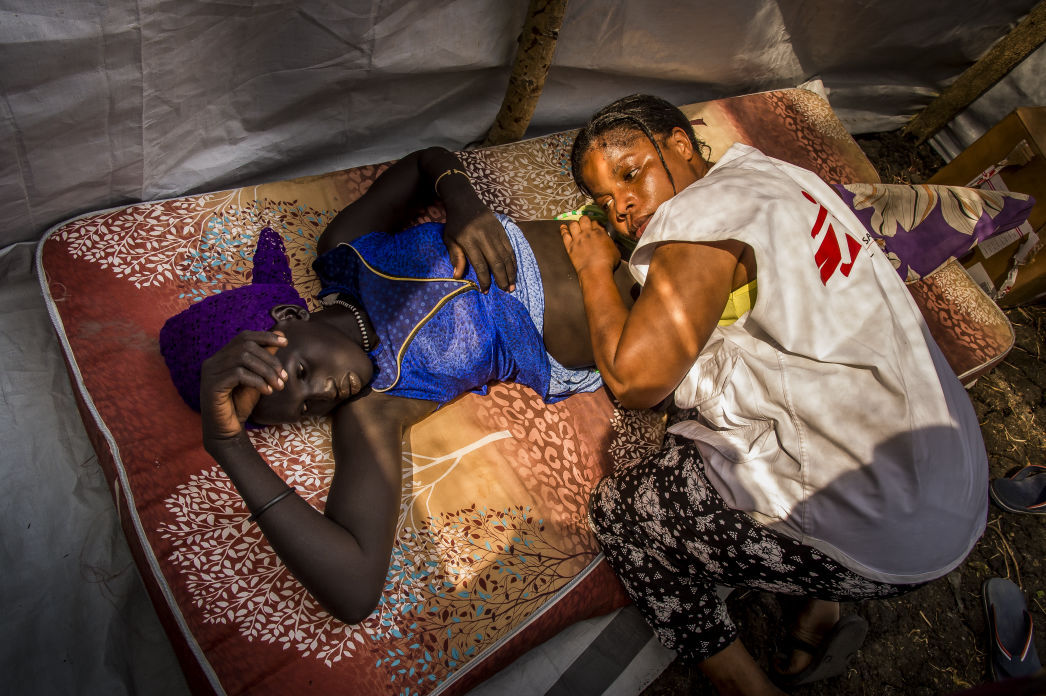
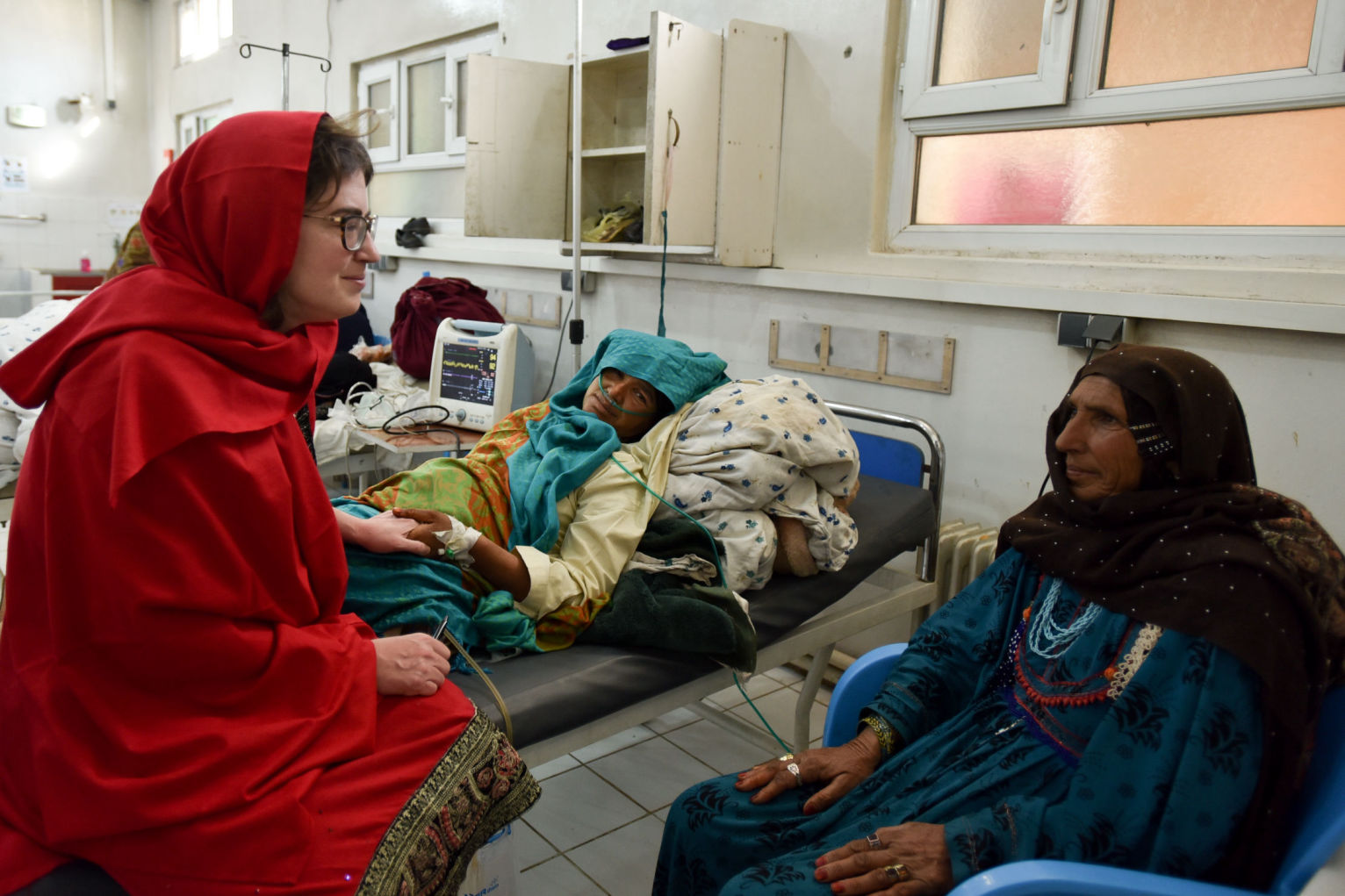
Do you see women with disabling conditions in our maternity wards and hospitals?
Yes. One disability that is represented is obstetric fistula. In all the projects where I have worked, MSF receives women with a fistula who come for a normal delivery or a C-section. We organise treatment for them or refer them to other NGOs and public hospitals. We also see patients who have experienced uterine rupture. It usually occurs during an extreme prolonged labour, when the baby cannot come out for days. We always try to save the uterus, especially if the patient wants more children, but even the women who recover cannot deliver vaginally ever again. Each subsequent pregnancy is at risk. We see the same patients coming back years later to seek help.
In your experience, how large is the group of MSF patients who are persons with disabilities?
It is a small minority. I cannot say if it is one percent or three percent, but we are talking about a fraction of our patients. However, I have worked mostly in maternities, so with women who are already pregnant. If you work with outpatient consultations, you might see other forms of disabilities – including infertility . In settings where MSF works, this is a huge problem, but because treatment is complex and costly, we lack the means to respond to it.
What are the main causes of infertility in field settings?
It usually results from a pelvic infection, an STD or maternal sepsis, but it can also be the long-term consequence of a wrong treatment of appendicitis. With an early diagnosis and intervention, the risk of infertility is much lower, but for our patients, access to medical care is often difficult, and many come too late. In some contexts, an additional difficulty is the high prevalence of HIV. Women living with HIV are more likely to have other STDs, like chlamydia or gonorrhoea, which also cause more damage when the immune system is weak.
What about women with disabilities resulting from reproductive health complications who do not reach our services? What barriers do they face?
Obstacles are multiple and difficult to overcome. When a woman gets a fistula, the husband often divorces her. This turns her into an outcast, and if she is financially dependent on the man, it is a disaster. Even if the treatment is free, she still needs to know that there is such a possibility and be able to afford the transport. In case of disabilities due to unsafe abortions, there is often a huge barrier. In countries where abortion is legally restricted, treating severe complications requires that the patient invents a convincing story or makes a leap of faith and trusts that the healthcare provider will not alert the police.
What does MSF do to prevent these disabling complications or reduce their impact on women’s life?
Apart from treating patients, MSF organises outreach activities to sensitise local communities. Health promoters talk to village elders and to families about the importance of a hospital delivery in the presence of a skilled attendant and about warning signs in pregnancy. This helps raise awareness on conditions such as eclampsia – convulsions related to high blood pressure – that untreated can lead to a stroke and a disability. Raising awareness on termination of pregnancy is much more complicated, since in many settings – for instance, in almost all Sub-Saharan Africa – abortion is legally restricted. We still sensitise there on consequences of unsafe abortions, though.
Why is health promotion so important in preventing reproductive health complications?
Just as accurate information can save lives, entrenched false beliefs about women’s health can have very real and very dangerous consequences. For example, in one rural community in Sierra Leone there was this belief that during pregnancy, when the woman does not menstruate, all menstruation blood accumulates in the uterus. When women delivered babies and were losing two, three litres of blood, it was considered normal – because this was the blood that had been gathering in the womb. In reality, if you bleed so much, you go into shock and need emergency care. In the community, there was no awareness that bleeding is a warning sign and not a natural phenomenon.
How does MSF work with women who have acquired a disability due to reproductive health complications?
Survivors of sexual violence have access to unlimited consultations with a psychologist, but most women come back only once or not at all – because they live far away or because this is not a priority, even though post-traumatic stress disorder (PTSD) can also be disabling. To patients with a fistula MSF offers family planning, preferably a long-acting method. It takes time for the scar to heal, so women should avoid pregnancy during the first year after the surgery. We also talk to their husbands about the importance of family planning and of refraining from sex in the first months. In Egypt, there is a project focused on migrants, where we help survivors of sexual violence. The approach is holistic, so patients get medical care, psychotherapy and physiotherapy for treatment of persistent pain. In the field, I have also seen collaboration with Humanity & Inclusion [formerly Handicap International; an NGO specialised in assistance to vulnerable populations, in particular people with disabilities, in emergency, reconstruction, chronic crisis and development contexts] in providing physiotherapy. But there are also many settings where MSF cannot do much for patients who leave our hospitals with a disability.
Sexual violence can have disabling consequences, but persons with disabilities – particularly women and girls – are also more exposed to it, more vulnerable to abuse. Does MSF reach them too?
In Afghanistan, I treated a patient who was paralysed due to polio and sexually abused. In DRC, I received a pregnant woman who had lost one arm in a violent attack. I would also receive expecting women with mental impairments. In cases like that, we always wonder whether they have ever given their consent. So yes, we do reach some of these extremely vulnerable women and girls. The medical care they get is no different from what we offer to other patients. There is also an important link here to the general vulnerability of women in the contexts where we work. In some of these countries, transactional sex – sex in exchange for protection, food or money – is widespread. This also leads to feminisation of the HIV epidemic. In Sub-Saharan Africa, we see HIV-positive women in all our maternities.
What care do we offer to these HIV-positive patients?
The most important thing is to put the mother as early in pregnancy as possible on antiretroviral treatment (ARV). If the viral load – the amount of HIV in the blood – is low or undetectable, the risk that the baby is infected drops below five percent, or in ideal circumstances even below one percent. After delivery, the mother should continue treatment for her own health, and we should continue treatment for the baby, because if the mother is breastfeeding, there is still risk of infection through breast milk. Unfortunately, in some contexts, for instance in Central African Republic, many women are not tested for HIV in antenatal care and only learn their status when they arrive to our clinic to deliver. We still give them one tablet of ARV before delivery, but this is not ideal – it is too late then to put the mother on effective ARV and start treatment to prevent transmission. In situations like that, there is a missed opportunity and a much higher risk for the baby. Treating HIV in infants is very complicated. Most children who acquire HIV from their mother and do not receive proper treatment die before their second birthday.
Do you have any advice regarding prevention or treatment of disabilities related to reproductive health complications? What could we do better to include persons with disabilities in our interventions?
What we do well in our hospitals is prevention of fistula and other complications by giving women access to timely caesarean section. The part outside the hospitals is much more difficult to influence. There are many factors beyond our control, such as level of education of women and their families – and the lower the level of education, the higher the risk of fistula and other complications. I feel that in MSF there is room for improvement in health promotion activities. While not all of them are effective, they do help strengthen primary health care and our links to communities. In many projects, we put significant efforts into keeping premature babies alive – but even if they leave the hospital in a good condition, we do not provide any physiotherapy or nutrition support afterwards. We give the mother a baby with special needs, and we consider it a success, because the baby did not die, but we do not provide the family with any means to cope with these special needs. This is where MSF could hugely improve. There could also be more space in the organisation for brave medical and humanitarian workers with disabilities, who strive for a meaningful life despite their disability. Including them would convey a powerful message to our expats and national staff: you can do anything in life.
In 2018, 182 MSF projects provided sexual and reproductive health care and 137 projects provided sexual violence care. While some of these projects overlapped, about 50% of all MSF projects reported on one of these components. For delivery care, the number of projects amounted to 123, or 31% of all MSF projects.
Dr Séverine Caluwaerts qualified as a gynaecologist-obstetrician in 2007 in Belgium, her home country. During her residency, she spent one year in South Africa, where she cared for a large population of HIV-positive women. After finishing her specialization, she did a six-month tropical medicine course and in 2008 went to work with MSF in Sierra Leone, to which she has returned several times. She has also worked in the Democratic Republic of Congo, Niger, Burundi, Pakistan and Afghanistan in MSF maternal health projects. When she is not on mission, she works with HIV-positive pregnant women in Belgium and is involved in teaching medical students and midwives. She is also one of the referent gynaecologists for MSF.

It is just over midnight and I am lying in my tent, listening to songs and laughter. This morning my patients with fistula complained about lack of sleep. I only smiled and suggested that they go to bed early. The truth is that there is this amazing sisterhood here, a family like no other. The women celebrate every night until the small hours the fact that they have finally met someone like themselves and found hope for a cure. They savour the newfound sense of belonging and acceptance. I cannot explain this sisterhood with words, but it is one of the most beautiful things I have ever seen.
The women occupy a small area of the hospital; a big fence surrounds what we call “the fistula village”. Inside, four large sleeping tents house 50 to 60 patients. In the middle, there is a more permanent building for those recovering from a surgery. All women we treat here tell similar stories. They barely survived a long, brutal delivery. They lost, or almost lost, their baby. They emerged from this traumatic experience injured, unable to control urine or faeces, or both. Their families and communities rejected them, and they have lived in exclusion ever since.
An estimated 60,000 women in South Sudan suffer from obstetric fistula due to a birth injury. Fistula is an abnormal connection between two hollow spaces. In obstetric fistula, the connection forms between the vagina and rectum or bladder. Under a normal delivery, contractions open the cervix and push the baby out. However, sometimes the contractions are not strong enough or the pelvis is too narrow for the baby to pass. After days of prolonged labour and pressure, the soft tissues compressed between the baby’s head and the pelvic bone die. Often so does the baby. In the healing process, an abnormal connection forms in the mother’s body. In severe cases, the woman can be left with two or three fistulas. The last known case of obstetric fistula in Europe was reported in 1943. Since then, proper delivery care and access to caesarean section have eliminated it from the Western world. If in South Sudan there are still so many women living with this stigmatising and disabling condition, it is because of lack of basic maternal and perinatal care. Most women give birth at home, without any medical assistance. Young first-time mothers are the most affected.
When a hole appears between the bladder and the vagina, the woman no longer controls her urine, since there are no muscles in the abnormal connection. As soon as the body produces urine, the woman leaks. To avoid this, women try to drink less. But when less urine is produced, it also smells stronger. The first few of days in a fistula village, the smell is hard to bear. What all our new patients need to do is to start drinking water, lots of it – up to five litres a day. Then the smell fades, and it is wet everywhere; you have to be very careful where you choose to rest, because you can easily sit in a pool of urine.
Months before I arrived in South Sudan, my local colleagues had travelled around looking for women with a fistula. They searched in villages and huts, asking around for women with fistula symptoms. In a relatively small area, they identified 80 probable cases. In the beginning, it is very difficult to find them: these women are hidden, not spoken of. Once they realise they can get help, they come forward, out of the shadow, and they start sharing their stories.
Many of them were pregnant for the first time. In the South Sudanese culture, it is vital to get married and have many children. Most fistula patients were married at a very young age and did not receive any medical care throughout pregnancy. During delivery, there is nowhere to seek help. Mothers give birth at home, assisted only by local women. Our patients describe excruciating deliveries lasting for four, five, ten days. An unaccounted number of young mothers die. Over half of the women who develop a fistula in result of a prolonged labour will never be pregnant again, even after a surgery. Many experience divorce and exclusion. In countries like South Sudan, being part of a larger group is a matter of life and death. Women rejected by their families and communities become extremely vulnerable. There are no statistics showing how many of them die of suicide or due to other indirect consequences of their injury.
Is it possible to prevent fistula and the suffering it entails? Access to caesarean section and proper health care are of critical importance. Adequate medical assistance can reduce the risk of a fistula even after a prolonged labour. Depending on the severity of the injury, the patient should have a urinary catheter for two to six weeks post-delivery to allow the damaged tissue to heal without forming an abnormal connection. MSF offers the same kind of care to women after a fistula surgery. This also means that all our patients keep carrying two large buckets: one for drinking water, and the other for the urine.
One day, a colleague told me that he had seen several of the women at the local market. I was overwhelmed with joy and pride. The fact that these women dared to be seen in public made me hopeful. The following day, we went to the market together and I treated my patients to a cup of tea. It was our own celebration of courage – and a perfect way to raise awareness in the community.
Obstetric fistula is a condition that can be prevented, but that continues to affect millions of vulnerable women. While it is possible to repair a fistula, the procedure is complicated and few surgeons master it. Since the condition is virtually absent from the Western world, doctors are not taught how to treat it. Some hospitals in African countries do train surgeons to perform the operation, but treatment remains very costly and demands long hospital stays. Most importantly, it requires the conscious and considerable effort of identifying women affected by fistula and letting them be seen.

A smiling 17-year-old, Agok is cheeky and likes to dance. One and a half years earlier, she was pregnant with her first baby, excited and ready for the life’s new wonder. Nothing went as planned. She was in labour for days, but the baby did not come out. Its movements got fewer and weaker – until they stopped. Fearing for Agok’s life, her family called for a “spear doctor”, a traditional healer believed to have unnatural power. He removed the dead child's body, saving the mother. But the damage to her pelvic floor was tremendous. Agok was left with three fistulas, one in the rectum and two towards the bladder. She was constantly leaking urine and faeces. Still, she was among the fortunate few: when her husband divorced her and the community rejected her out of fear that she might have a demon, the family greeted her back. They have cared for her since.
I first met Agok when she was getting ready for her second operation. Six months earlier, she had undergone her first surgery, which had closed one of the fistulas towards the bladder. With two more fistulas left, the heavy leaking continued. It was so bad that MSF sent Agok home with a special bed – the one used in treating cholera cases, with a hole in the middle – to ensure that she would not sleep in her own urine and faeces. I still remember Agok’s smile when she returned to the fistula village, carrying the bed she hoped she would no longer need. In the second surgery, we closed the fistula between rectum and vagina. This is a simpler procedure, and Agok could travel home one week after the surgery. I would not meet her until six months later, when she came back for her final operation.
Agok knew that she would have to use a urinary catheter for five weeks post-surgery, but after such a long time in the fistula village, she also knew very well how to remove it. The night before the scheduled date, the girl secretly took the necessary medical tool and performed the procedure herself. I have never seen anyone dance and smile so much leaving a toilet. For the first time in two years, Agok actually needed one.
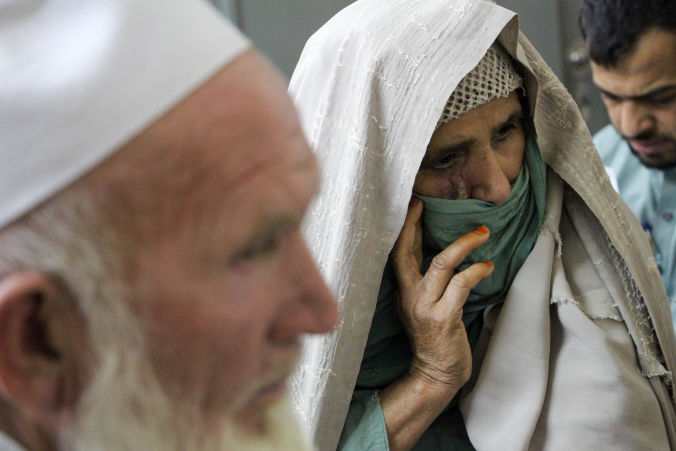
Neglected tropical diseases (NTDs) were identified in the early 2000s as a group of mostly communicable diseases, affecting poor, vulnerable, and voiceless populations living in low- and middle-income countries. They are associated with stigma, disability, and discrimination, especially in girls and women,[1] and are neglected by research, meaning that accurate information about their burden in terms of mortality and disability is not available. WHO reports that approximately one billion people are affected by one or more NTDs,[1] but given the neglected nature of these diseases, the exact burden and morbi-mortality are likely underestimated.[2]
It is often difficult to diagnose NTDs early enough for effective interventions, resulting in diagnosis at an advanced stage of disease and with greater disability, if not death, as a consequence. Most NTDs worsen mental health, either due to neurological causes, pain or physical impairment, or stigma and social discrimination – an additional disease burden that could be reduced with earlier diagnosis and care.[3]
WHO defines disabilities as “an umbrella term, covering impairments, activity limitations, and participation restrictions. An impairment is a problem in body function or structure; an activity limitation is a difficulty encountered by an individual in executing a task or action; while a participation restriction is a problem experienced by an individual in involvement in life situations”.[4]
The current WHO list of NTDs includes 20 diseases (see Appendix), which can result in disabilities of various degrees. Some NTDs, such as schistosomiasis, trachoma, onchocerciasis, and lymphatic filariasis, are not diagnosed individually but are treated via mass drug administration (MDA) campaigns, where populations living in an area known to be endemic receive a safe treatment, which reduces transmission levels by treating the human reservoir of the infective agent. This strategy has been shown to be effective, but not sufficient to cover 100% of the population; disease still develops in people who have not been treated.
Some NTDs are more visible, they are skin-associated, disfiguring, and stigmatising like Buruli ulcer, cutaneous leishmaniasis (CL), yaws, mycetoma, post-kala-azar dermal leishmaniasis (PKDL), and the deforming elephantiasis of late stage lymphatic filariasis. In all these diseases, lesions become ulcerated, develop on a large area of the body, affect uncovered body areas (including the face), itch, burn, or hurt, and impair social relations, daily activities, walking, working, and living a normal life. The resulting social stigma is significant. Patients with eumycetoma often have to undergo amputation of a foot, leg, or arm,[5] and since no antifungal is available to treat the infection, they may have to suffer multiple amputations. CL can develop into severe ulcerations that take a long time to heal, and it sometimes invades and causes deterioration of the nasal or pharyngeal mucosa that can lead to difficulties with nutrition.[6] Even though PKDL is mostly non-severe, it scars the face, and women sometimes only seek treatment in order to increase their potential for marriage.[7] Lymphatic filariasis can result in lymphoedema affecting the lower limbs and giant hydrocele. These obvious and terrible deformations mean that people are unable to live normally; they experience pain and severe discomfort, become isolated, and are at risk of severe complications.[8] The social stigma, exclusion, and disability associated with leprosy are well known and emblematic of how seriously NTDs can impact the life of already poor and underprivileged populations.
Other NTDs, such as human African trypanosomiasis (HAT) [also known as sleeping sickness] or visceral leishmaniasis, are life-threatening in the absence of effective treatment. Amongst other more severe symptoms, patients slowly develop fatigue and lose weight; they lose the ability to work, to contribute to the family’s usually modest income and even to travel for healthcare. The development of frightening neuropsychiatric symptoms in people with HAT results in the exclusion of them and their families, as some consider them to be cursed.
Other NTDS, however, develop more silently due to a paucisymptomatic [i.e. presenting few symptoms] post-infection phase and consequent delay in diagnosis, later resulting in chronic and disabling disease. People with onchocerciasis who do not access MDA develop vision impairment that evolves to blindness and sometimes intractable severe pruritus [itch] – endemic villages are full of adults walking with the help of a young child. Approximately 30% of Chagas disease patients will develop an often fatal cardiomyopathy [disease of the heart muscle] for which no treatment exists. Chronic schistosomiasis infection has been associated with liver fibrosis and bladder cancer; [9] genital infection is another potential complication that leads to impaired fertility in men and women. [10]
In children, both chronic schistosomiasis infection and onchocerciasis-associated epilepsy[11] have been shown to impair cognitive development and growth, severely curtailing any hope of a productive future.[12] Another perverse effect of NTD-related disability is that it prevents children from attending school, where they would otherwise receive MDA.
Finally, a highly neglected consequence of most NTDs is their impact on mental health,[13] either directly because of the impact of the disease on already poor people, stigma, community exclusion, and lack of hope for their future, but also indirectly on their families and caregivers who often feel desperate and powerless to help their loved ones.[14]
In most cases, existing case management tools are either ineffective, unsafe, prone to development of resistance, not adapted for field use, expensive, or a combination of the above.
In 2001, DNDi and others published a landmark paper[15] highlighting the imbalance between the burden of NTDs and the research invested in addressing these diseases. This was named the ‘90/10’ gap since only 10% of global health research is devoted to conditions that account for 90% of the global disease burden. In 2013, a follow-up publication[16] showed that progress had been made, but that the gap persisted, with just 4% of new therapeutic products registered in 2000–11 indicated for NTDs.
For most NTDs, proper epidemiological data on gender distribution is limited. However, for some diseases the impact on pregnancy and transmission to the foetus is known, and, for example, WHO is now targeting prevention of mother-to-child transmission of Chagas disease.[17]
Bearing in mind Sustainable Development Goals 3 (good health and well-being) and 5 (gender equality), it is clear that much more needs to be done: [18]
• Firstly, by diagnosing patients earlier and closer to where they live through the development of new tools but also through greater integration within primary health care strategies.
• Secondly, by developing new therapeutic tools, combating the limitations of the existing ones, and, as far as possible, developing treatments that can be administered to pregnant or potentially pregnant women.
In response to some of these challenges, DNDi is currently developing new treatments for HAT, visceral leishmaniasis, CL, PKDL, onchocerciasis, and mycetoma. In the meantime, a more holistic approach should be developed to address social stigma, issues around mental health, and other NTD-related physical disabilities.
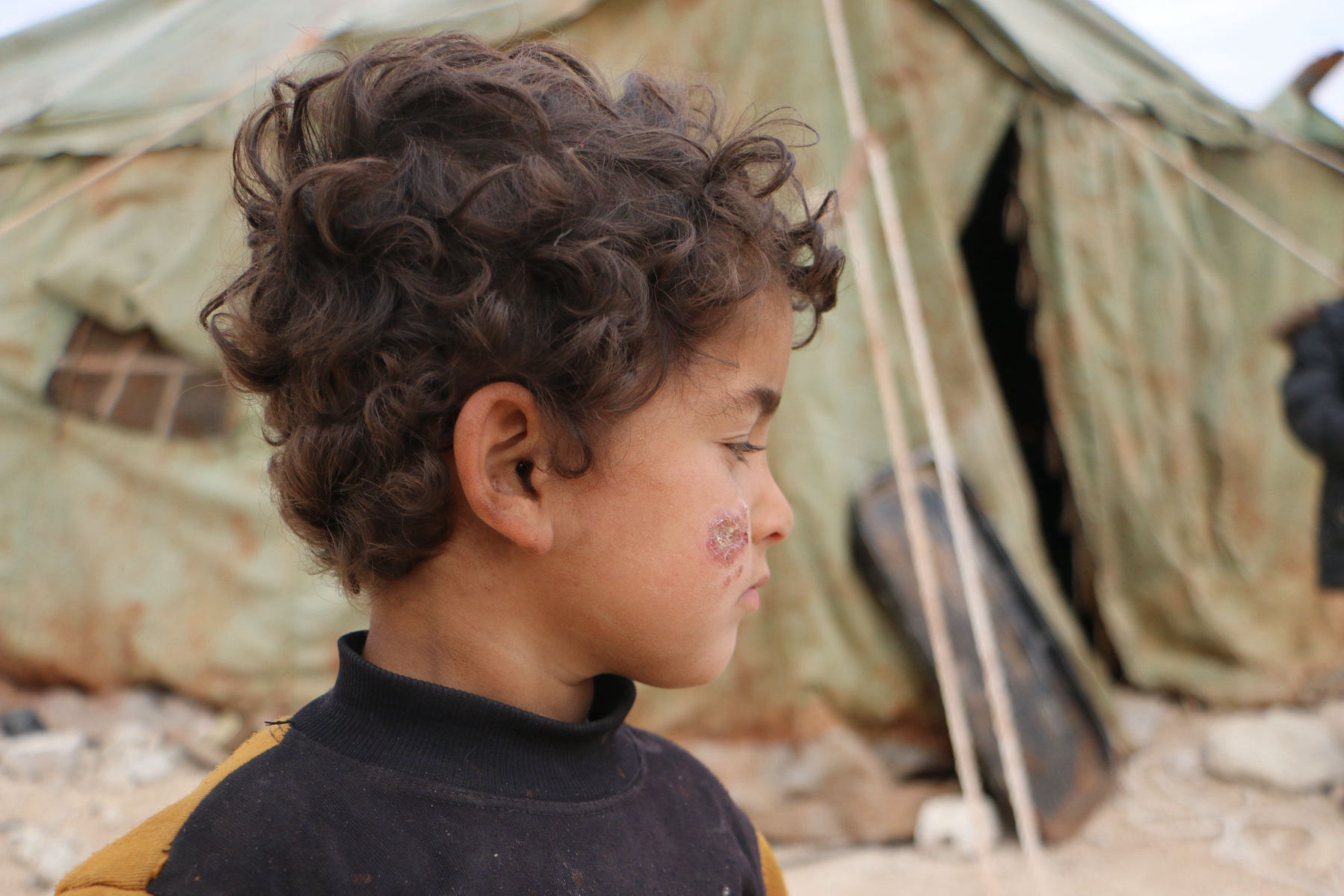
References
1. World Health Organisation, Geneva. Working to overcome the global impact of neglected tropical diseases – first WHO report on neglected tropical diseases. 2010 https://www.who.int/neglected_diseases/2010report/en/, accessed 25 February 2020.
2. Herricks JR, Hotez PJ, Wanga V, Coffeng LE, Haagsma JA, et al. (2017) The global burden of disease study 2013: What does it mean for the NTDs? PLOS Negl Trop Dis. 11(8): e0005424. https://doi.org/10.1371/journal.pntd.0005424
3. Picado A, Nogaro S, Cruz I, Biéler S, Ruckstuhl L, Bastow J, Ndung’u JM (2019) Access to prompt diagnosis: The missing link in preventing mental health disorders associated with neglected tropical diseases. PLOS Negl Trop Dis. 13(10):e0007679. https://doi.org/10.1371/journal.pntd.0007679 .
4. https://www.who.int/topics/disabilities/en/, accessed 27 February 2020.
5. Suleiman SH, Wadaella ES, Fahal AH (2016) The Surgical Treatment of Mycetoma. PLoS Negl Trop Dis. 10(6): e0004690. doi: 10.1371/journal.pntd.0004690 .
6. Lessa MM, Lessa HA, Castro TWN, Oliveira A, Scherifer A et al. (2007) Mucosal leishmaniasis: epidemiological and clinical aspects. Rev. Bras. Otorrinolaringol 73(6):843-847.
7. Garapati P, Pal B, Siddiqui NA, Bimal S, Pradeep Das, Murti K, Pandey K (2018) Knowledge, stigma, health seeking behaviour and its determinants among patients with post kala azar dermal leishmaniasis, Bihar, India. PLoS One. 13(9): e0203407.
8. Shenoy RK (2008) Clinical and Pathological Aspects of Filarial Lymphedema and Its Management Korean J Parasitol. 46(3): 119–125. doi: 10.3347/kjp.2008.46.3.119
9. Rollinson D (2009) A wake up call for urinary schistosomiasis: reconciling research effort with public health importance. Parasitology. 136:1593–1610. doi:10.1017/S0031182009990552.
10. King CH (2018) Mapping Out the under-Recognized Burden of Human Infertility Linked to Schistosoma haematobium Infection. Am J Trop Med Hyg. 98(4): 937–938. doi: 10.4269/ajtmh.17-1016.
11. Colebunders R, Njamnshi AK, Oijen MV, Mukendi D, Kashama JM et al. (2017) Onchocerciasis-associated epilepsy: From recent epidemiological and clinical findings to policy implications. Epilepsia Open. 2(2):145–152, 2017 doi: 10.1002/epi4.12054.
12. Ezeamama AE, Bustinduy AL, Nkwata AK, Martinez L, Pabalan N, et al. (2018) Cognitive deficits and educational loss in children with schistosome infection—A systematic review and meta-analysis. PLOS Neglected Tropical Diseases 12(1): e0005524. https://doi.org/10.1371/journal.pntd.0005524.
13. Dean L, Tolhurst R, Nallo G, Kollie K, Bettee A, Theobald S (2019) Neglected tropical disease as a ‘biographical disruption’: Listening to the narratives of affected persons to develop integrated people centred care in Liberia. PLoS Negl Trop Dis 13(9): e0007710. https://doi.org/10.1371/journal.pntd.0007710.
14. Litt E , Baker MC and Molyneux D (2012) Neglected tropical diseases and mental health: a perspective on comorbidity. Trends in Parasitology. 28(5) doi:10.1016/j.pt.2012.03.001.
15. MSF Campaign for access to medicine, Drugs for Neglected Diseases working group. Fatal imbalance: the crisis in research and development for drugs for neglected diseases. 2001 https://www.dndi.org/wp-content/uploads/2009/03/fatal_imbalance_2001.pdf, accessed 25 February 2020.
16. Pedrique B, Strub-Wourgaft N, Some C, Olliaro P, Trouiller P et al. (2013) The drug and vaccine landscape for neglected diseases (2000–11): a systematic assessment. The Lancet Global Health. 6(13): 371-e379 https://doi.org/10.1016/S2214-109X(13)70078-0.
17. https://www.who.int/neglected_diseases/news/Chagas-Preventing-mother-to-child-transmission/en/, accessed 27 February 2020.
18. https://www.un.org/sustainabledevelopment/sustainable-development-goals/, accessed 27 February 2020.
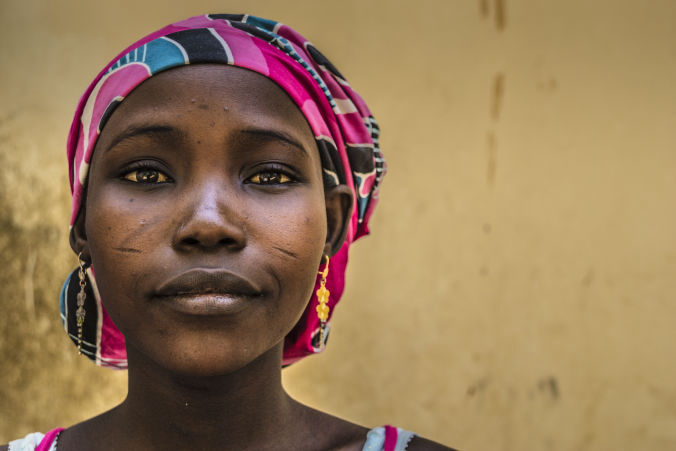
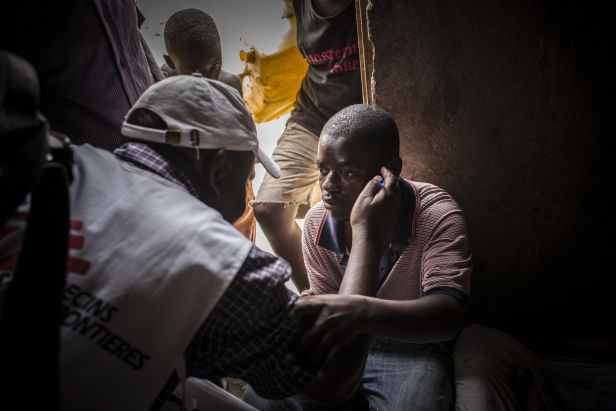
What are invisible disabilities?
The term “persons with disabilities” refers to those who have long-term physical, mental, intellectual or sensory impairments, which in interaction with different barriers may hinder their full and effective participation in society on an equal basis with others [1]. Invisible disabilities are conditions that interfere with day-to-day functioning but are not immediately apparent to others [2]. According to the World Health Organization (WHO), 15% of the world’s population lives with some type of disability. Most persons with disabilities do not use a wheelchair or any other support that would signal their impairment.
What are some examples of invisible disabilities?
• Chronic illnesses with disabling conditions (such as HIV, asthma, diabetes)
• Consequences of severe reproductive health complications (obstetric fistula)
• Certain cardiovascular diseases
• Neurological conditions (such as epilepsy)
• Blindness and vision impairment
• Mental illnesses with disabling conditions (anxiety, depression, bipolar disorder)
• Learning disabilities (dyslexia)
• Attention Deficit-Hyperactivity Disorder (ADHD)
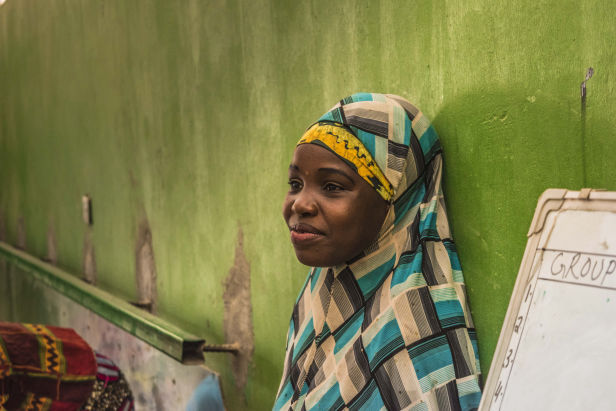
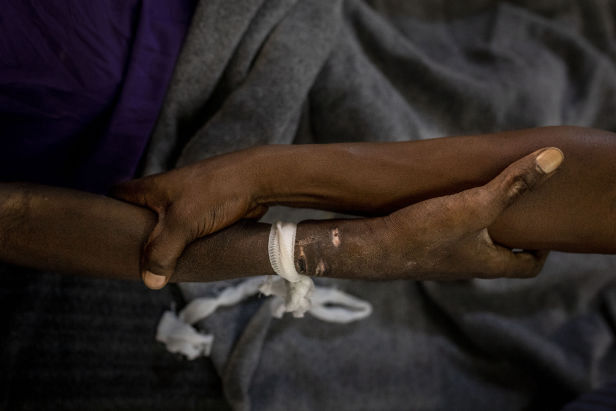
How are persons with invisible disabilities medically treated?
Invisible disabilities can be difficult to recognize and diagnose, which turns treatment into a challenging process. While they are often miscategorised and neglected, it is possible to manage their physical manifestations with the help of a doctor or a psychologist and adequate medication. Due to stigma and ostracism, many people with invisible disabilities receive wrong treatment, focused on “curing” the individual rather than on addressing their needs, whether medical or social, and improving their quality of life [3]. This happens because of misinformation and misconceptions present in many communities, where disabilities are seen as a disease or a burden.
What are the challenges?
Key challenges faced by those with invisible disabilities include lack of understanding and timely diagnosis. When the signs of disability are not apparent, the symptoms manifest themselves only occasionally or the condition requires a thorough and costly diagnosis, it becomes difficult to explain and justify specific needs of the person, who may be suffering in silence, unseen. Many struggle to have their disabilities recognized, as these invisible conditions are likely to be considered temporary or dismissed altogether. The invisibility of the impairment combined with limited insight into its causes and nature can create a strong stigma. This may further block access to health services or equal participation in the community [4]. Persons with invisible disabilities can be denied autonomy; some of them, labelled as mentally ill, are institutionalised or subjected to involuntary sterilisation [5]. Even if the community recognizes an invisible disability as a disability, the affected person can still face exclusion, since in many societies, disability continues to be perceived as inability: to be independent, to work and earn a living, to be a valuable member of the community.
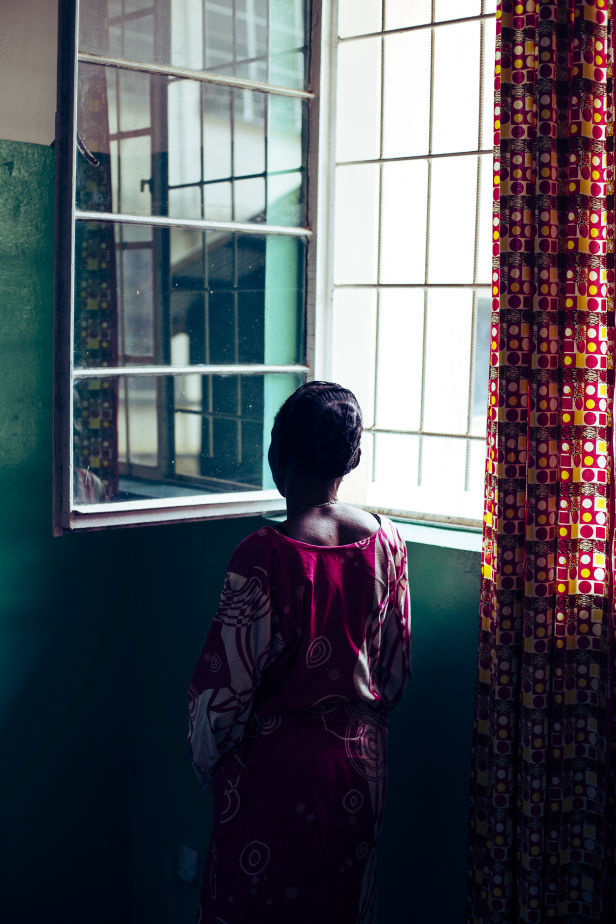
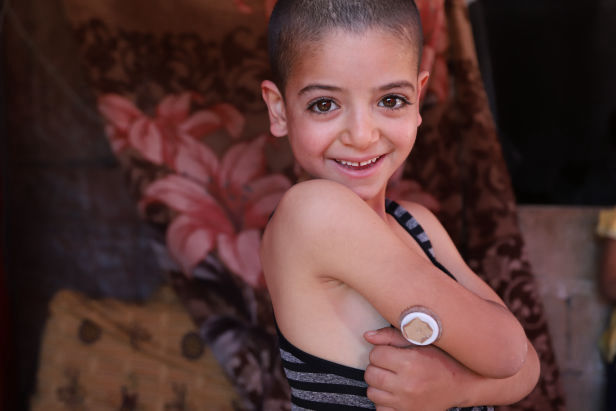
How does treating persons with invisible disabilities fall into the scope of MSF work?
Our teams provide medical care for patients with invisible impairments and difficult or rare diagnoses. An important part of this work is done in settings where invisible conditions are not recognised, deemed inexistent or imaginary, or associated with a strong stigma.
• We work with patients affected by chronic diseases.
• Our teams treat consequences of reproductive health complications, including fistula and unsafe abortions.
• We address mental health needs of populations, treating victims of torture, refugees haunted by traumatic experiences or stuck in a limbo, and advancing community approach to lift the stigma and approach more people.
[1] UN Convention on Rights of Persons with Disabilities.
[2] Laura Mullins, Michèle Preyde (2013), The lived experience of students with an invisible disability at a Canadian university, Disability & Society, 28:2, pp. 147-160.
[3] World Health Organization (2018), Disability and Health.
[4], [5] UNICEF (2011), World Report on Disability, p. 9.
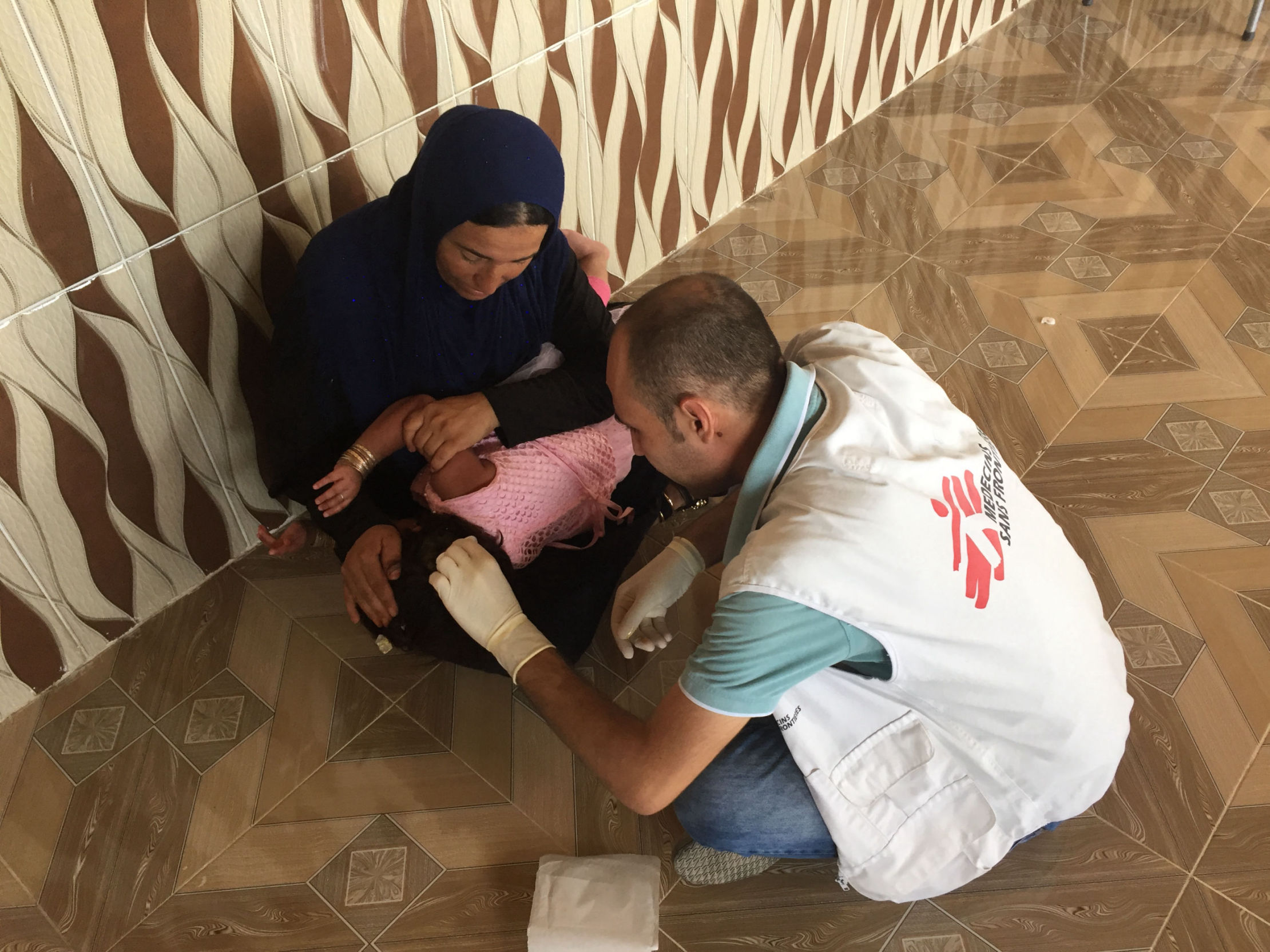
What is epilepsy?
Epilepsy is the most common neurological global disease, affecting about 50 million people worldwide [1]. It manifests itself in re-occurring seizures that can involve loss of consciousness or of control over bowel and bladder functions [2].
How is epilepsy disabling?
Due to consistent seizures, it may be difficult to maintain a job or complete activities of daily living. People affected by the disease may struggle with independent mobility, bathing and feeding [3].
How is this relevant for MSF?
Nearly 80% of those affected by epilepsy live in low- and middle-income countries, and 75% of people within this group do not receive the treatment they need [4]. They face stigma due to misinformation and entrenched beliefs that link the disease to curse, possession by evil spirits or witchcraft.

How does stigmatisation affect access of persons living with epilepsy to health care?
Persons living with epilepsy can be physically restrained by their families or communities and isolated from the outside world. Some are chained or roped, or locked indoors [5]. These practices make it extremely difficult for people living with epilepsy to interact with others and access basic services. In the absence of physical restrictions, stigma and discrimination can remain a strong barrier to health care.
Persons with epilepsy can also become too shy or embarrassed to seek medical assistance, which is critical to ensuring treatment needed to make them seizure free. This creates a vicious circle, with stigma blocking access to care, which in turn aggravates the symptoms and reinforces the stigma. Patients who do access health services may still feel reluctant to disclose information about their disability to others – including medical staff – for fear of judgment [6]. Ensuring that patients feel comfortable to share information about their disability and making simple accommodations to respond to their specific needs can greatly reduce barriers to health care.
Accommodations for persons with epilepsy
There are no blanket accommodations for patients with epilepsy, as the disease strongly varies in symptoms and severity. It is crucial to discuss what accommodations an individual may need, in order to determine how to best support them in achieving things to the best of their abilities. One example would be providing both written and verbal instructions to persons using medication that may affect their memory [7]. What is most important is to create a safe space for patients to speak openly about their disability and express their needs.
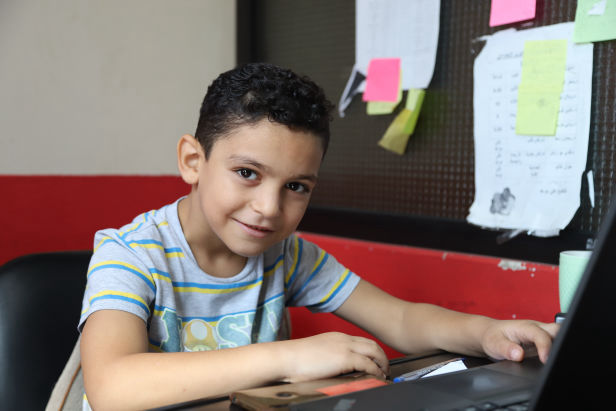
[1], [2] World Health Organization (2019), Epilepsy.
[3] University of Iowa (2007), Katz Index of Independence in Activities of Daily Living (ADL).
[4] World Health Organization (2019), Epilepsy.
[5] Thomas, S. & Nair, A. (2011), Confronting the stigma of epilepsy.
[6] MSF (2018), An innovative approach to mental healthcare.
[7] Epilepsy Foundation (2013), Reasonable Accommodations.

Buruli ulcer is a chronic skin infection, which causes large sores that are extremely difficult to heal and can result in severe and permanent physical disability [1]. It mainly affects children under 15 years of age and women in poor, rural communities living close to slow-moving or stagnant water, such as lakes, ponds and swamps [2]. The disease has been present in more than 30 countries in Africa, South America and the Western Pacific region. In 2018, 2,713 cases were reported, an increase from the previous year. The number of cases might however be underreported, as only 14 countries regularly provide data on Buruli ulcer to WHO.
Like tuberculosis and leprosy, Buruli ulcer is caused by a mycobacterium – in this case, Mycobacterium ulcerans [3]. It cannot be passed from human to human. Although the bacterium has been known since 1948 [4], we still know very little about how it is transmitted and how the disease progresses once a person is infected.
Because of this limited knowledge about the origin of the infection, some communities still believe that it is a curse. These beliefs lead to stigma and exclusion and are among the reasons why people affected by Buruli ulcer wait to seek health care until they are in an advanced stage of the disease.
It has been established that HIV is more prevalent among persons with Buruli ulcer. In Cameroon, the rate is 5-6 times higher compared to the general population. The HIV infection also makes ulcers more severe and persistent [5].
Shedding more light on this neglected disease and strengthening efforts towards prevention and timely treatment may help many vulnerable people, most of them children from rural communities, to avoid disfigurement, lasting disability and life in exclusion.

[1], [2] MSF (2012), Raising awareness about Buruli ulcer.
[3] MSF (2002), MSF starts Buruli ulcer project in Cameroon.
[4] Folkehelseinstituttet [Norwegian Institute of Public Health] (2010), Burulisår - veileder for helsepersonell [Buruli ulcer - guide for health professionals; article available only in Norwegian].
[5] MSF (2012), Raising awareness about Buruli ulcer.
This web page was made with Mobirise
SHARE THIS PAGE!